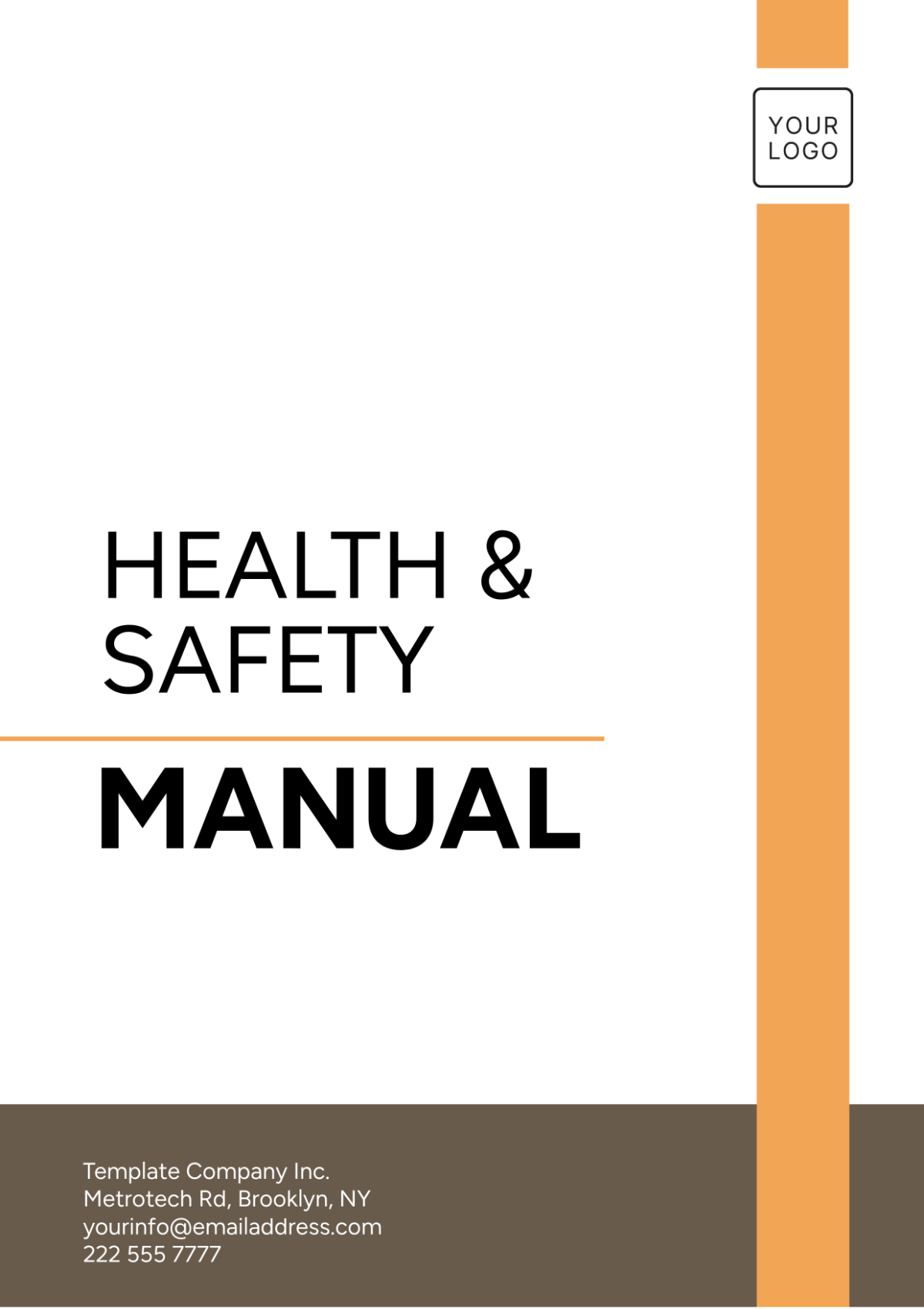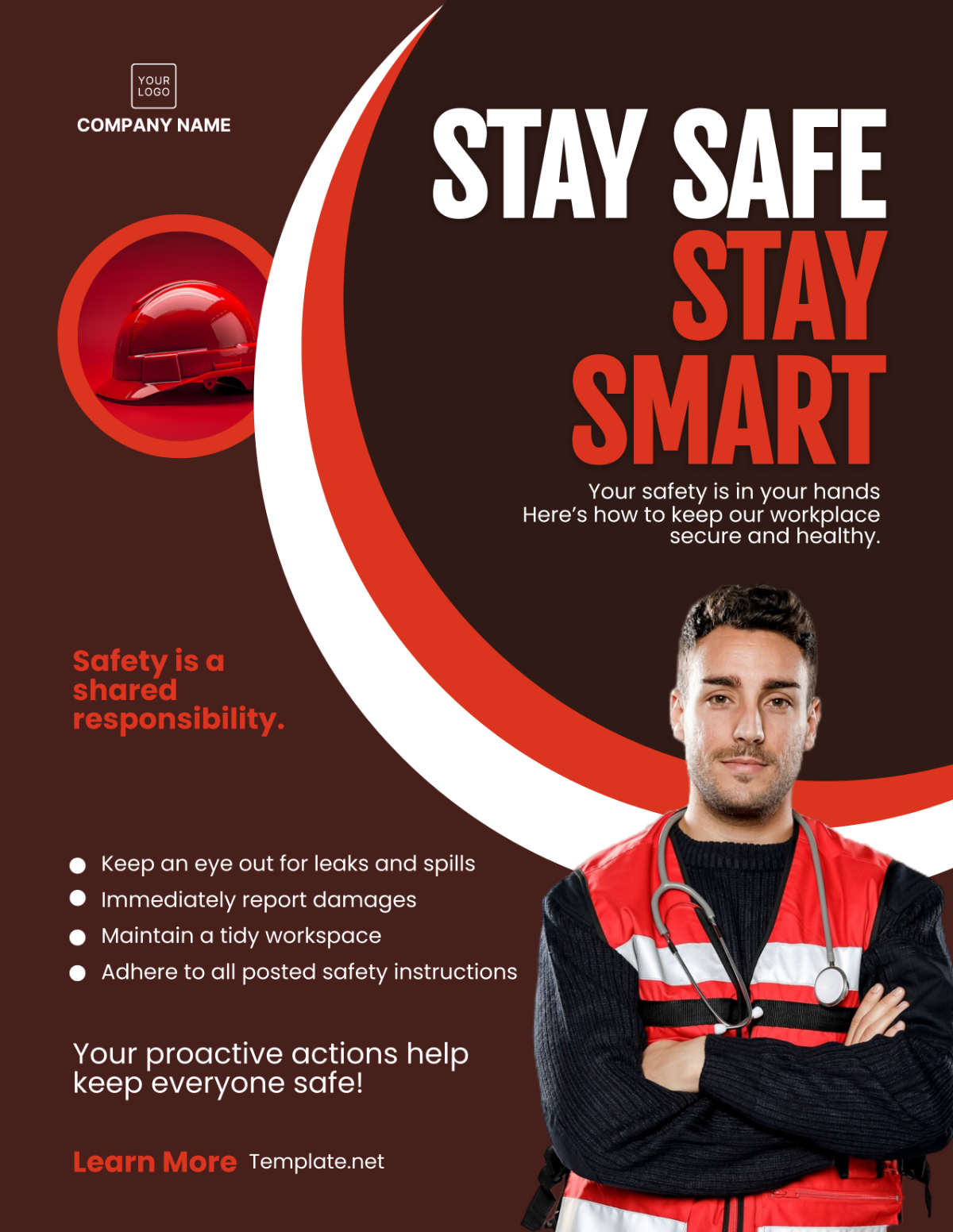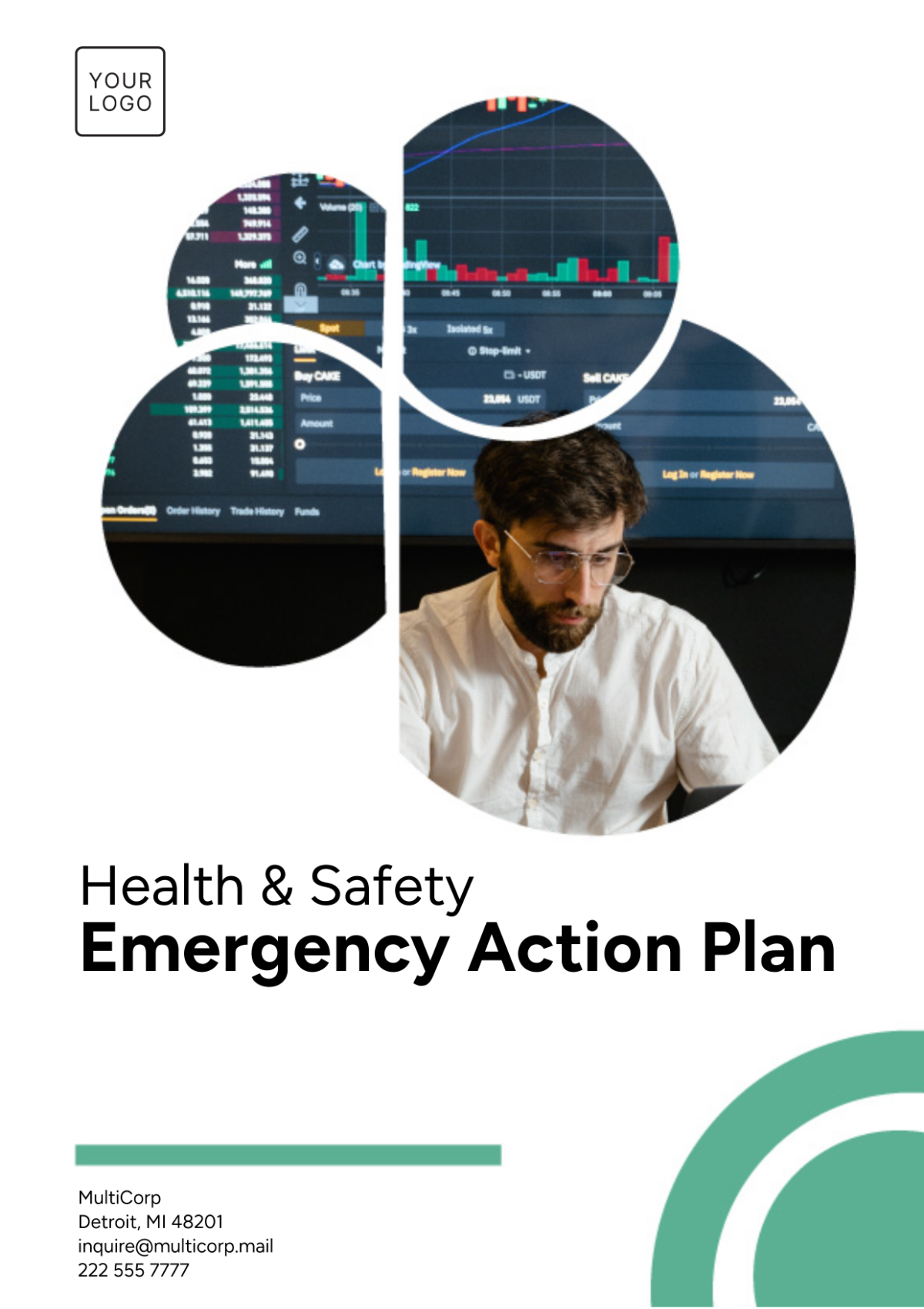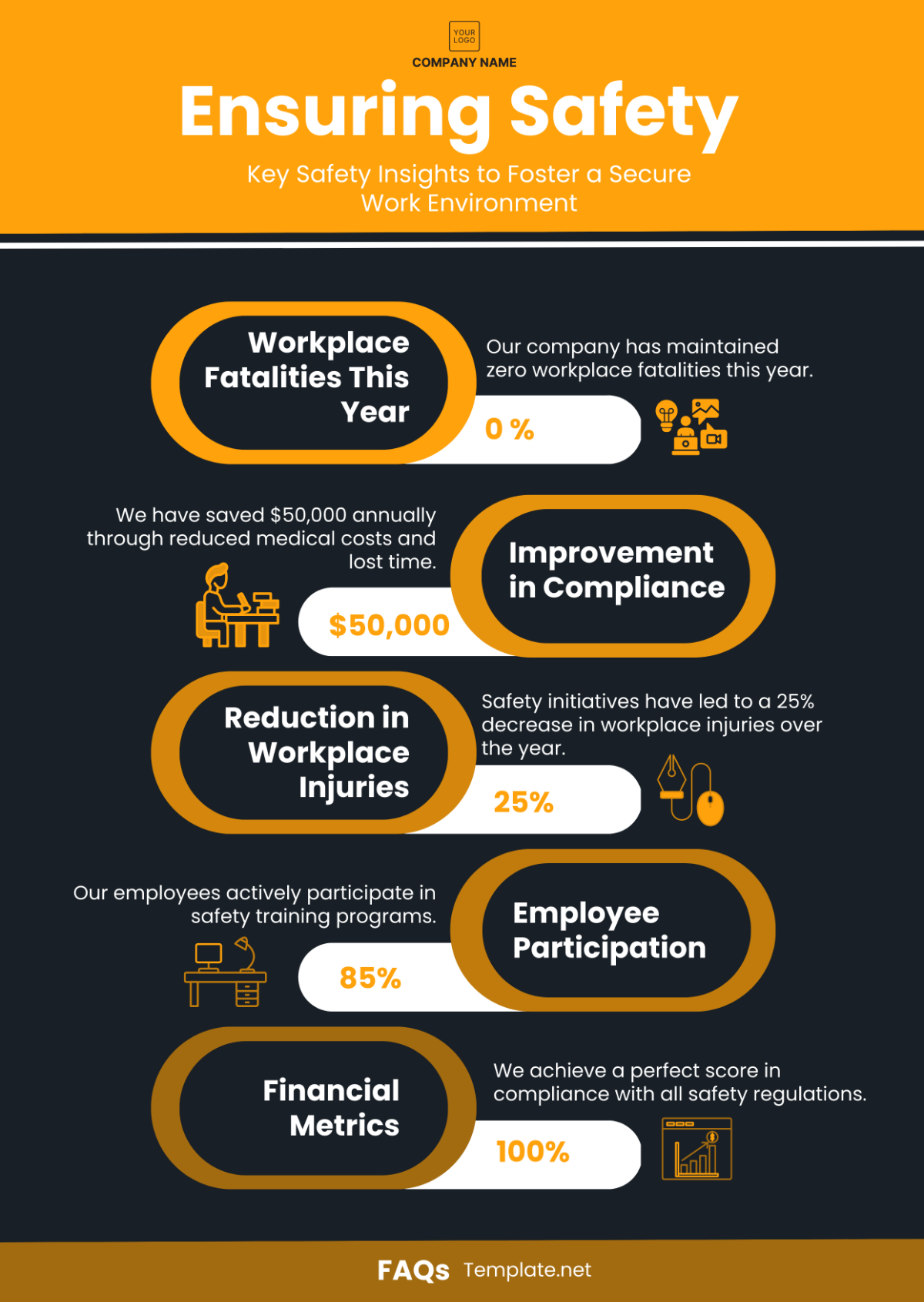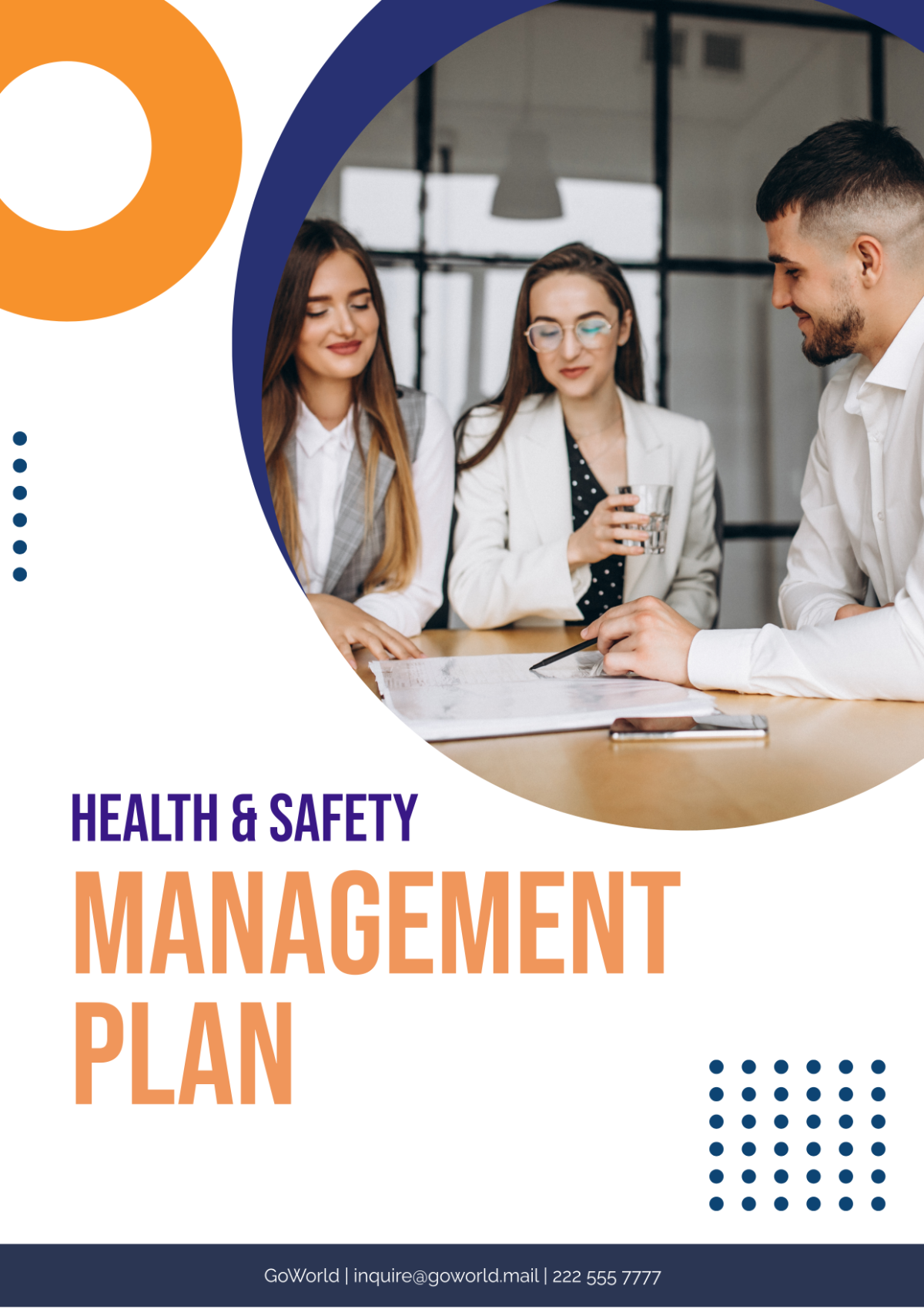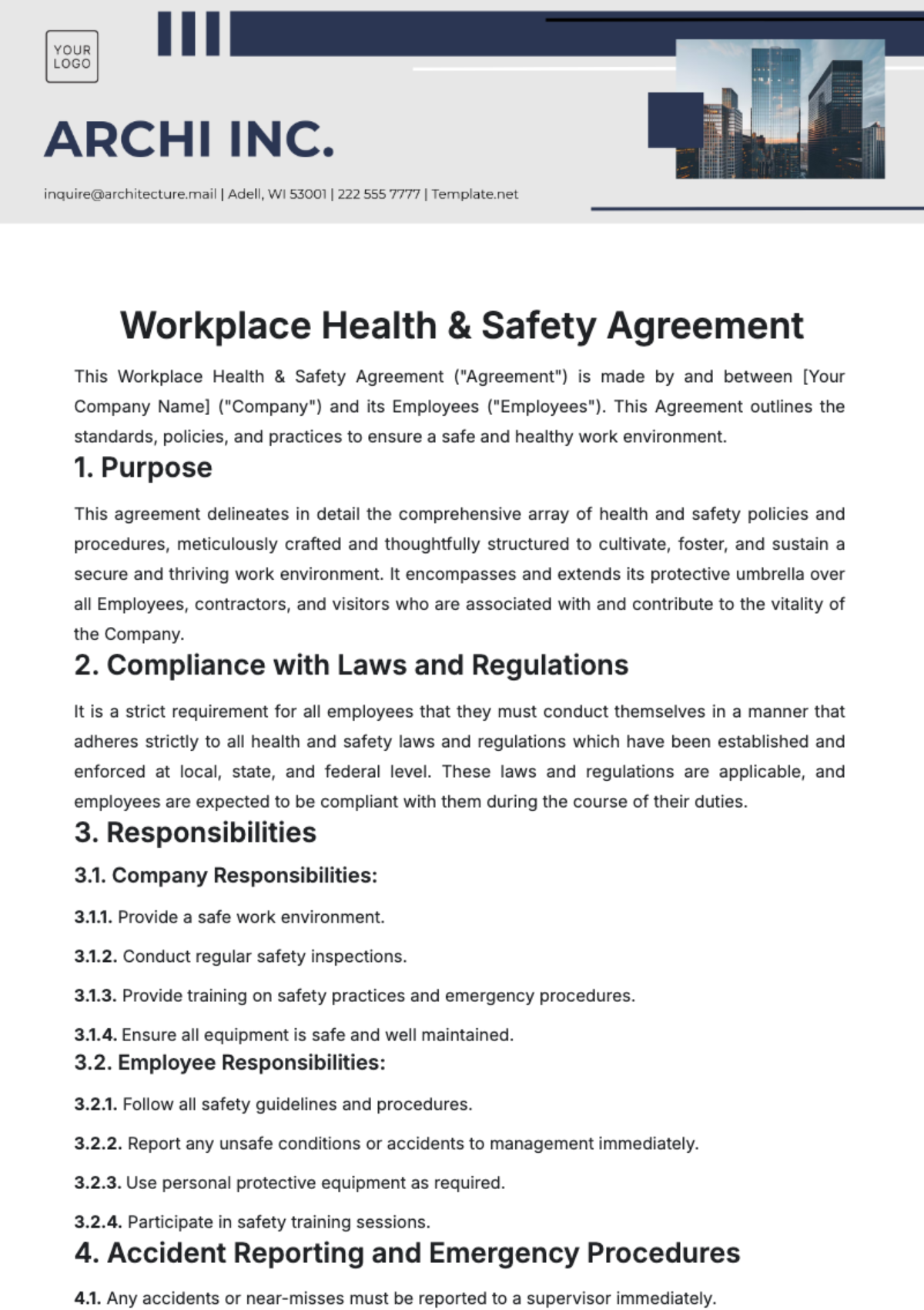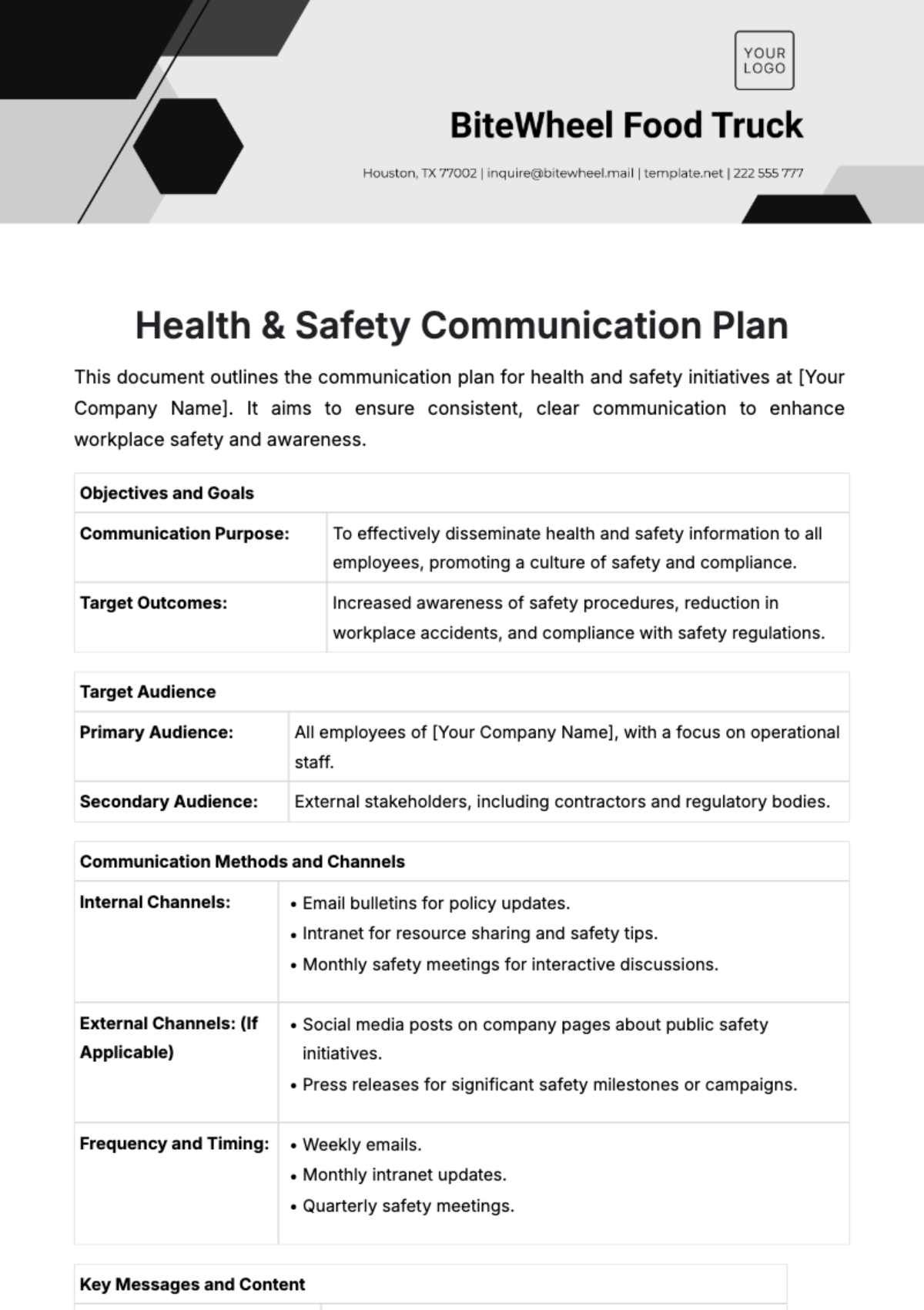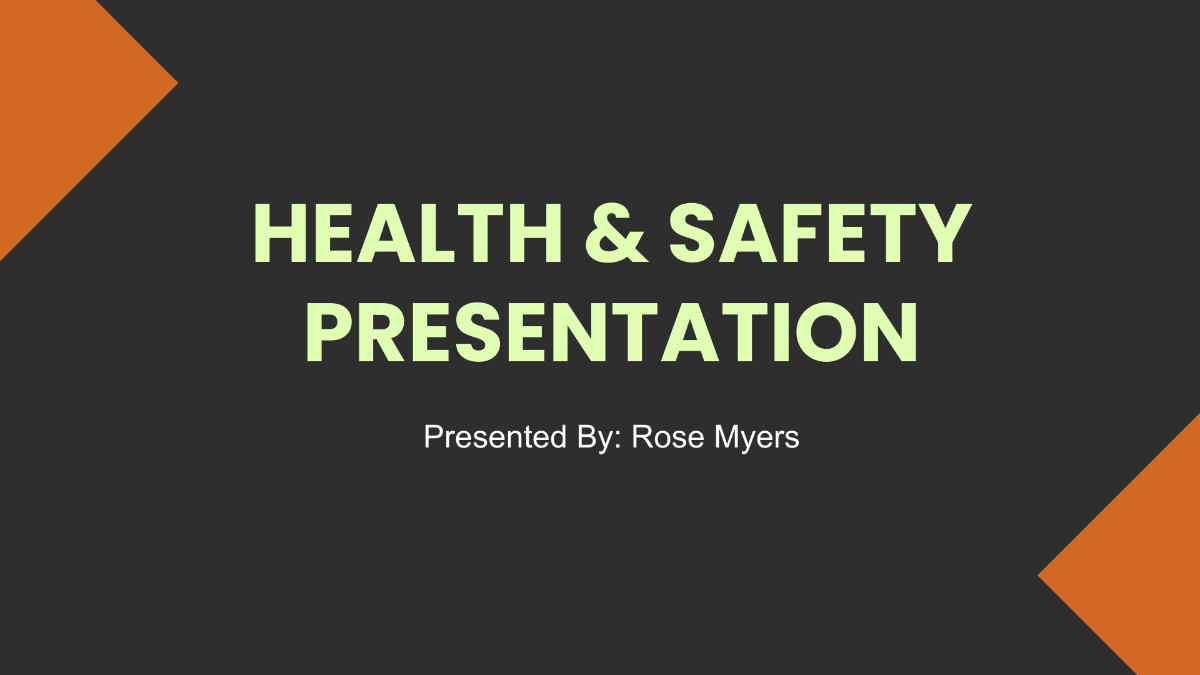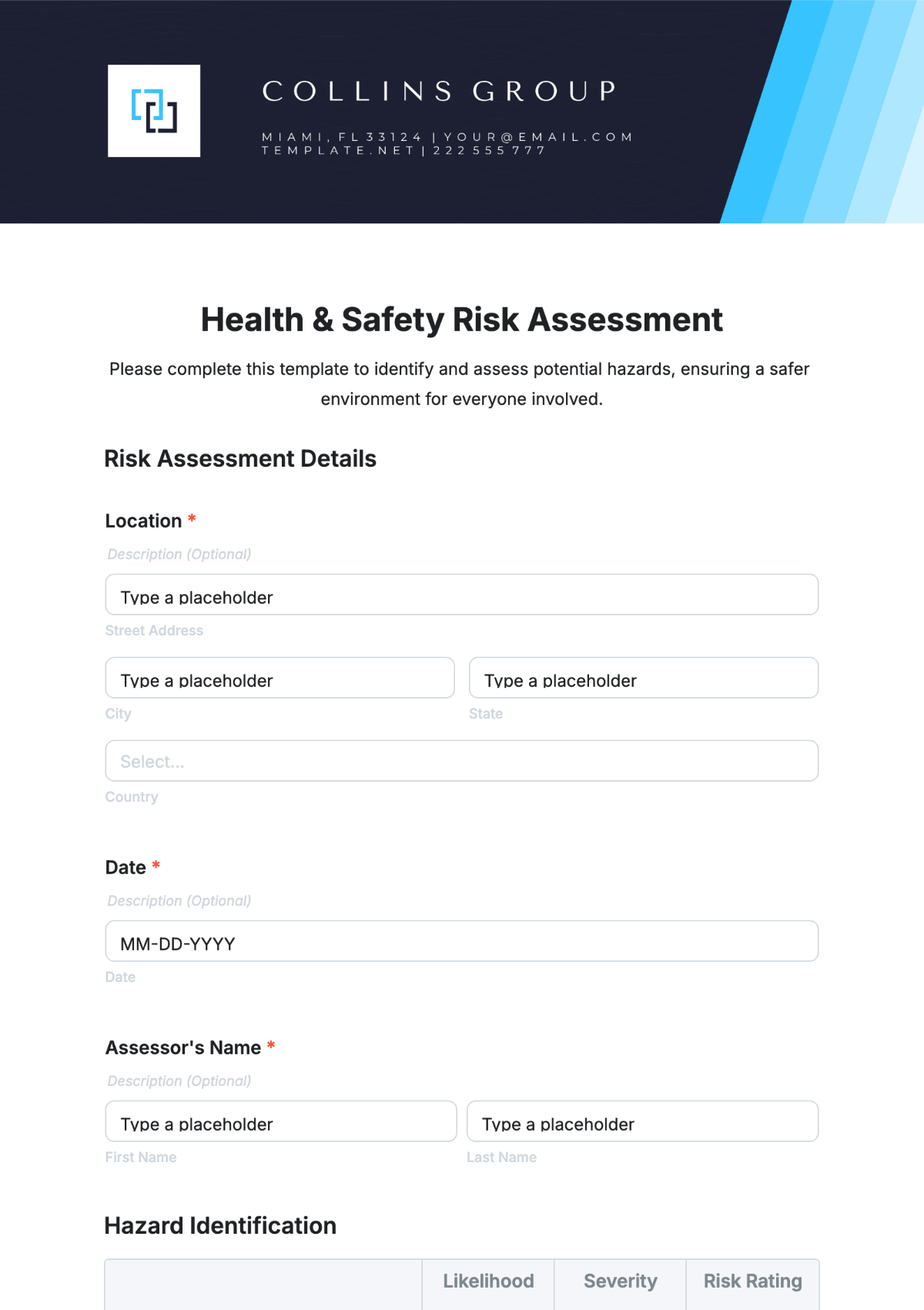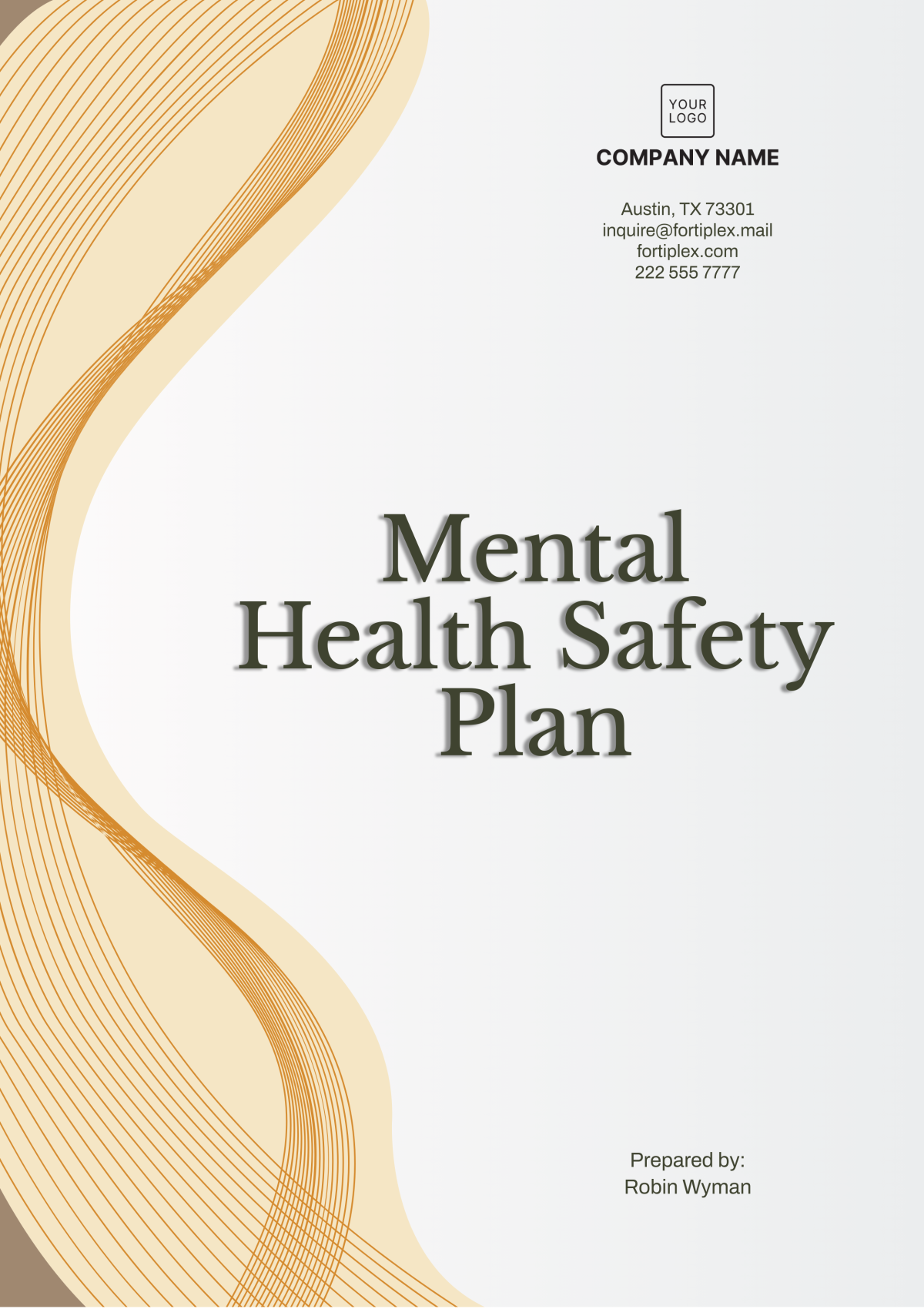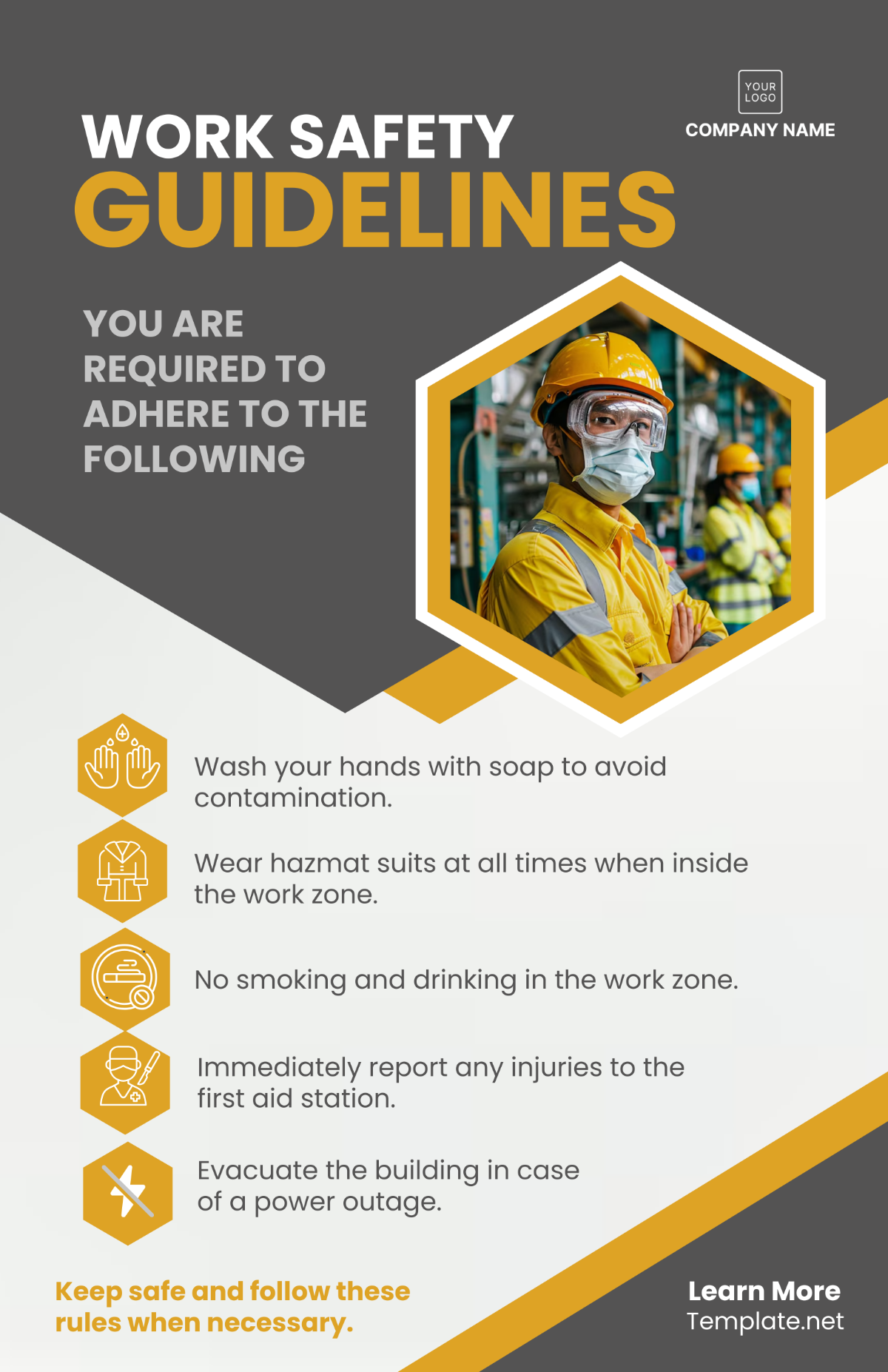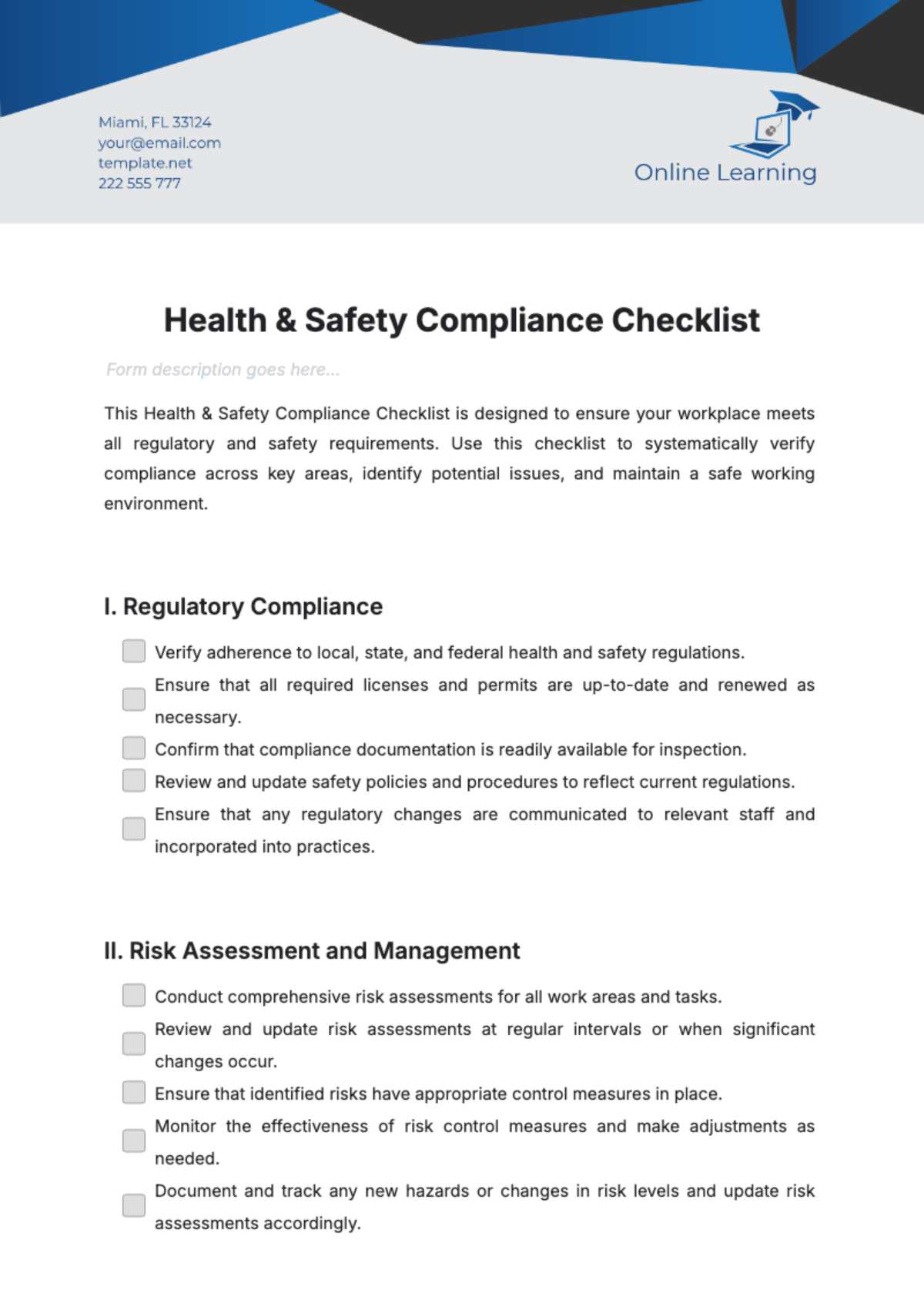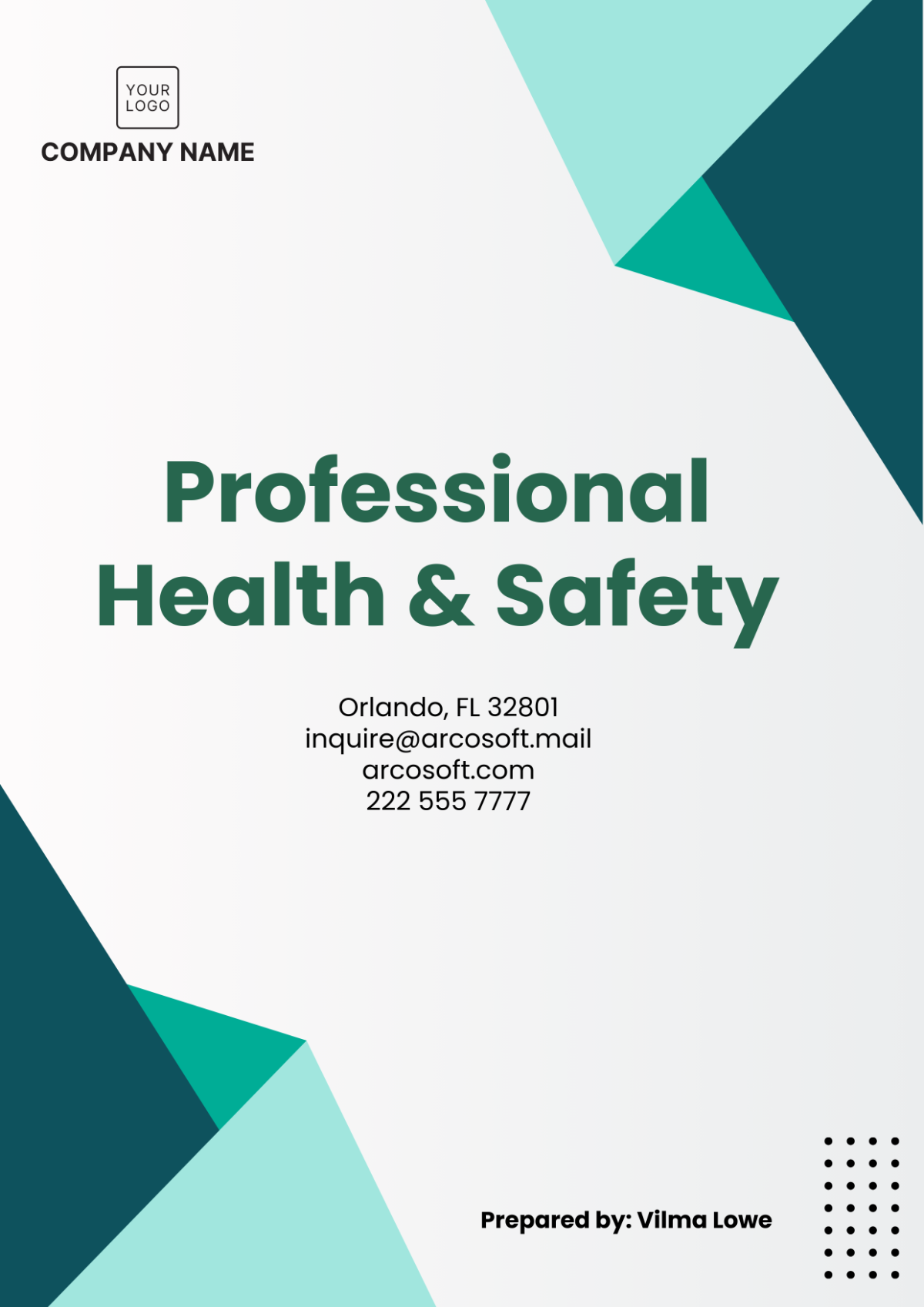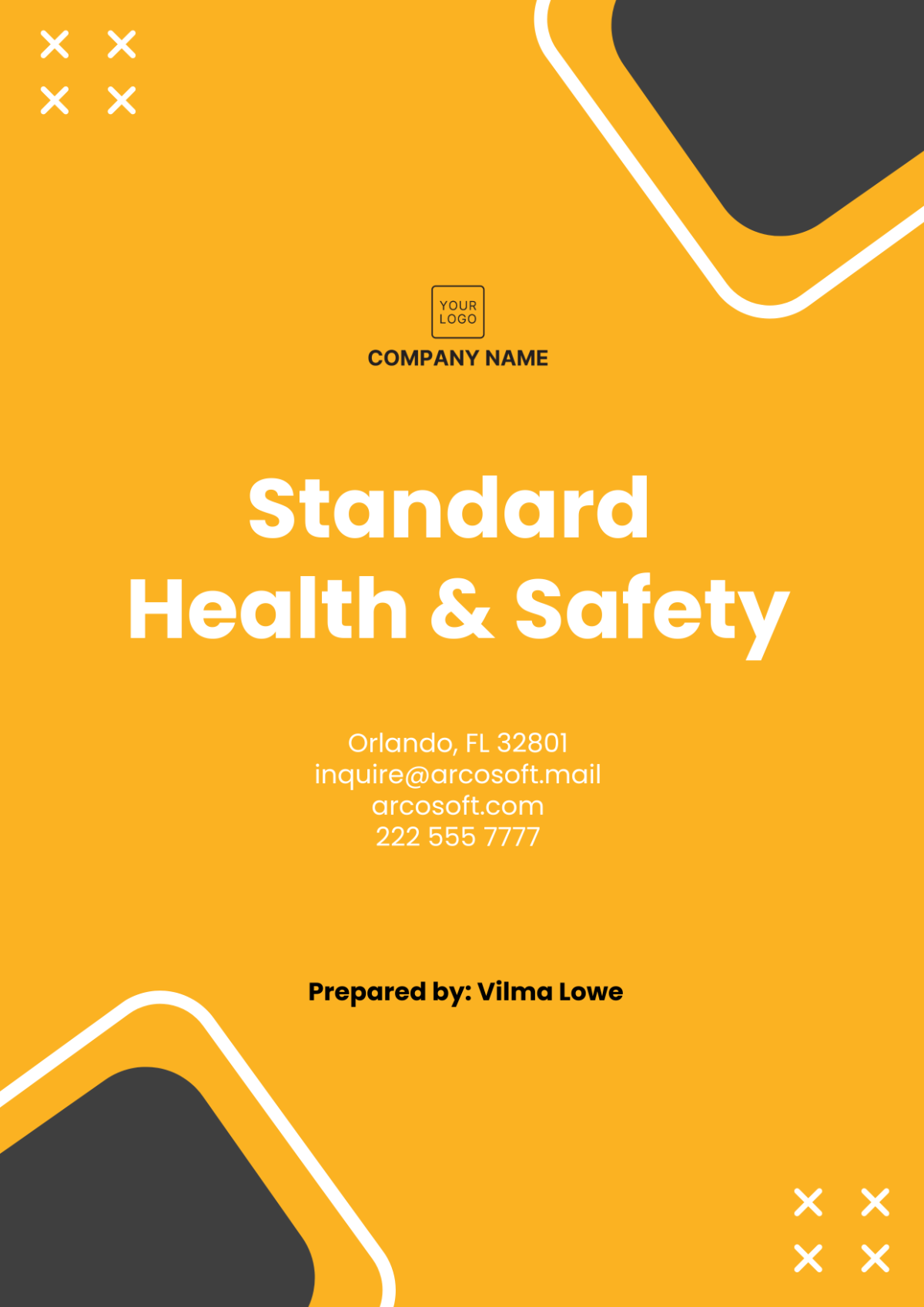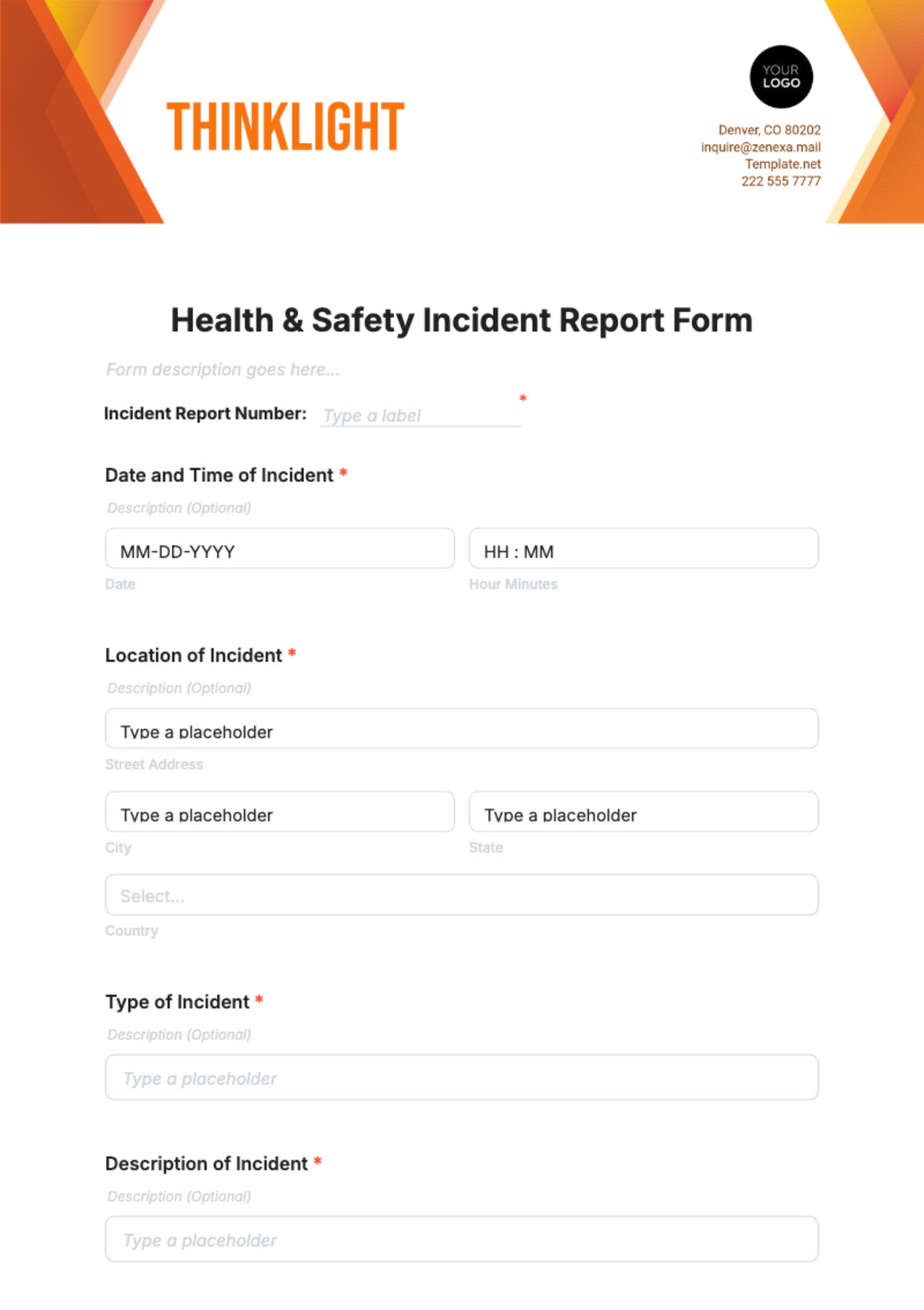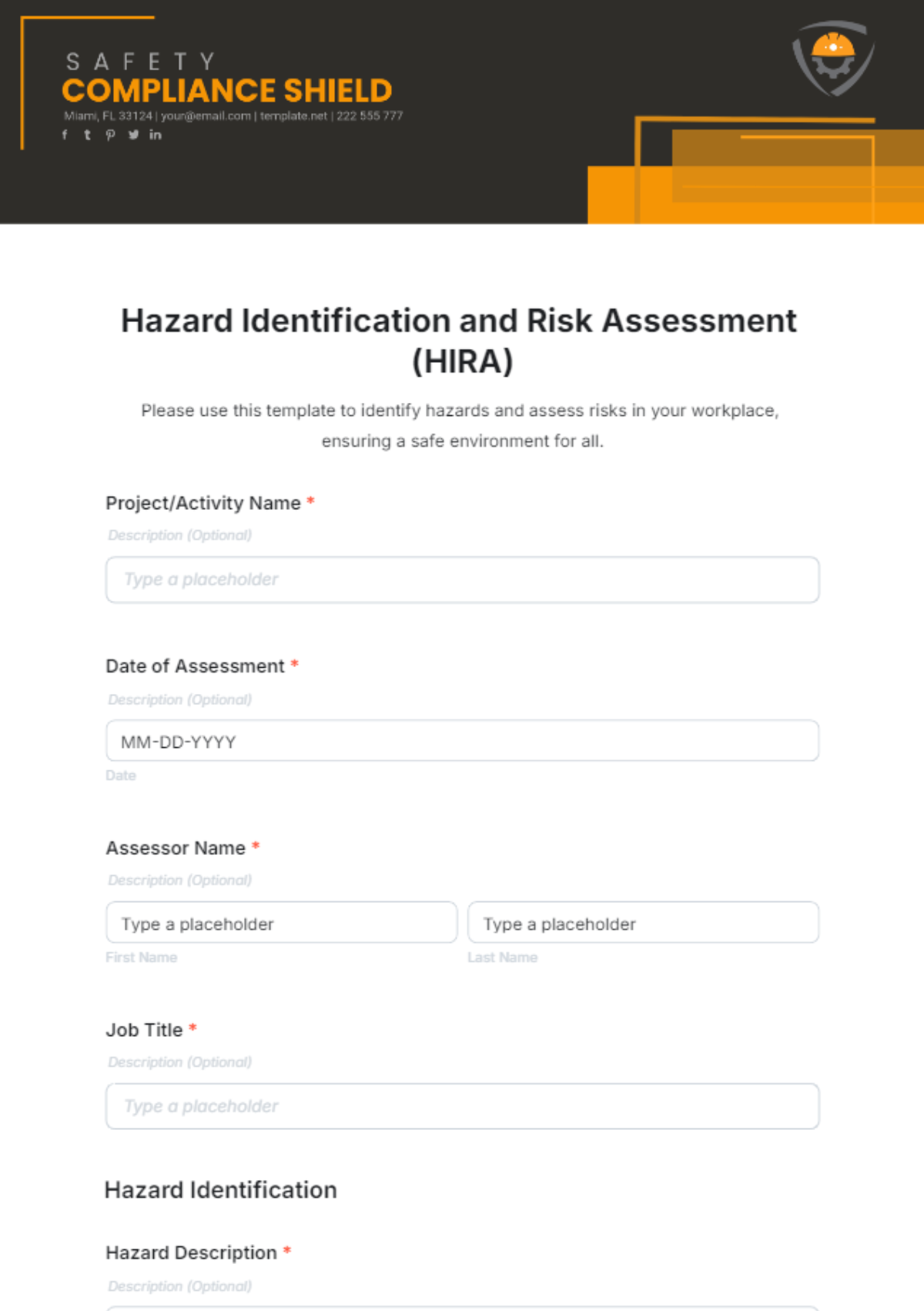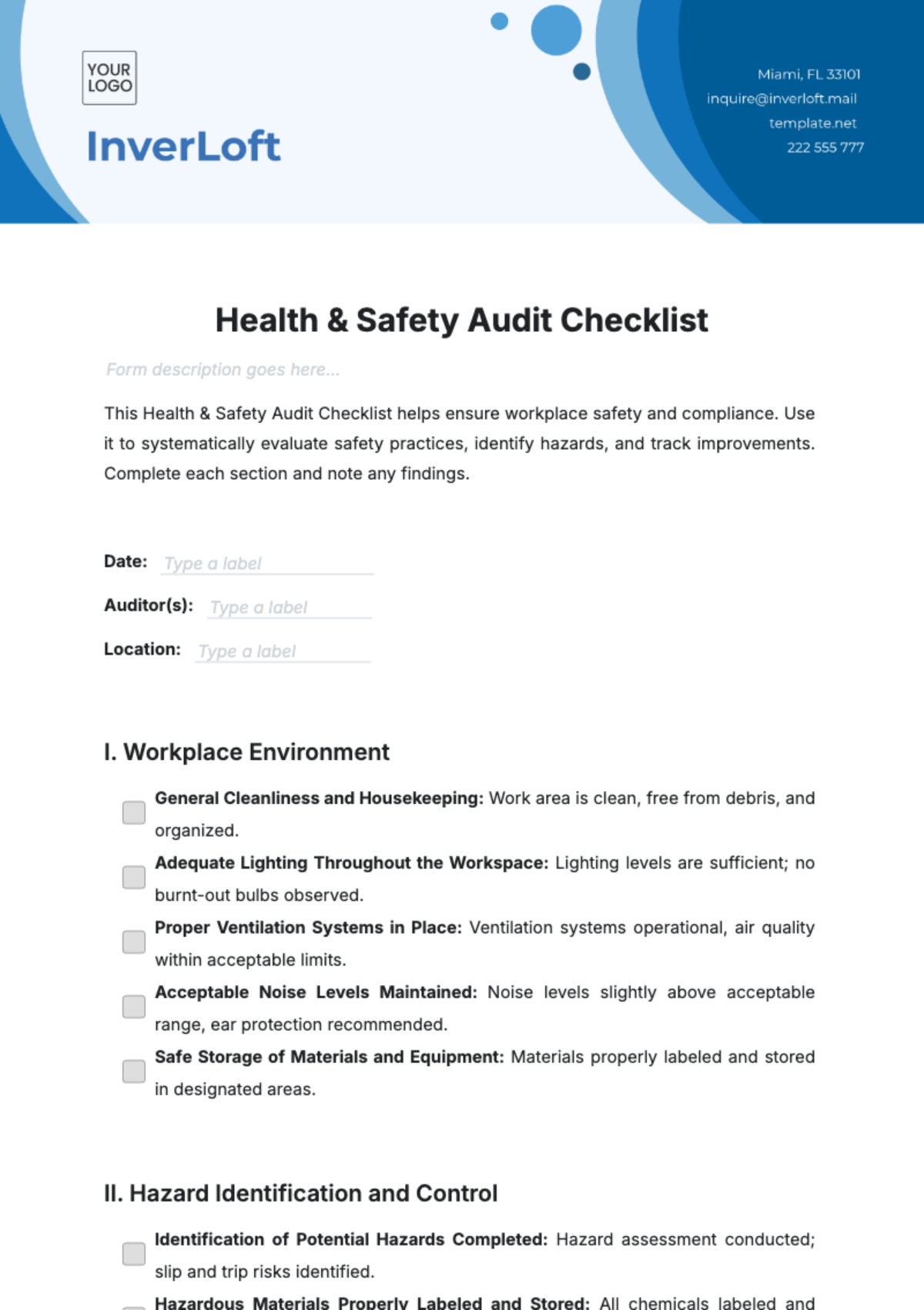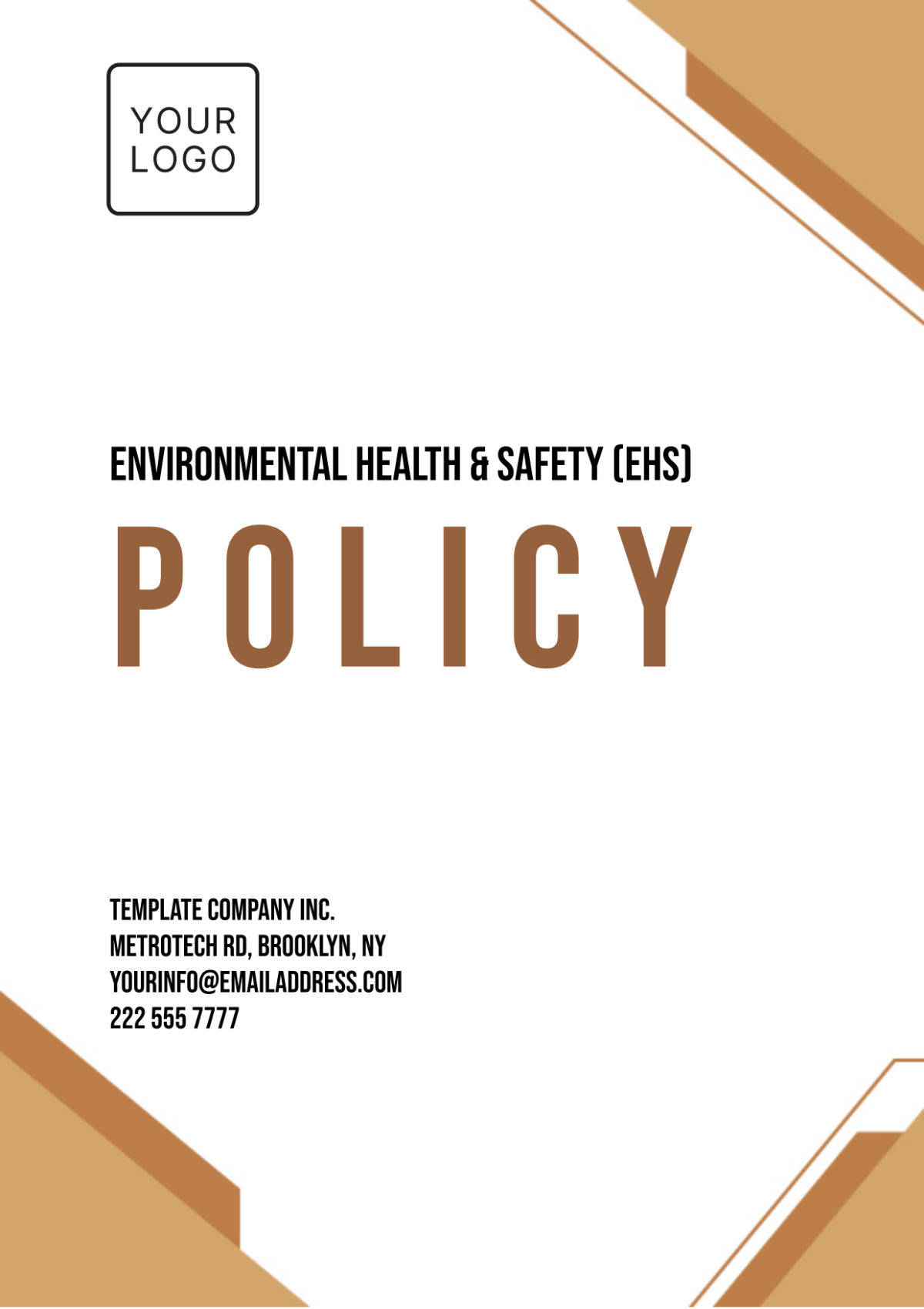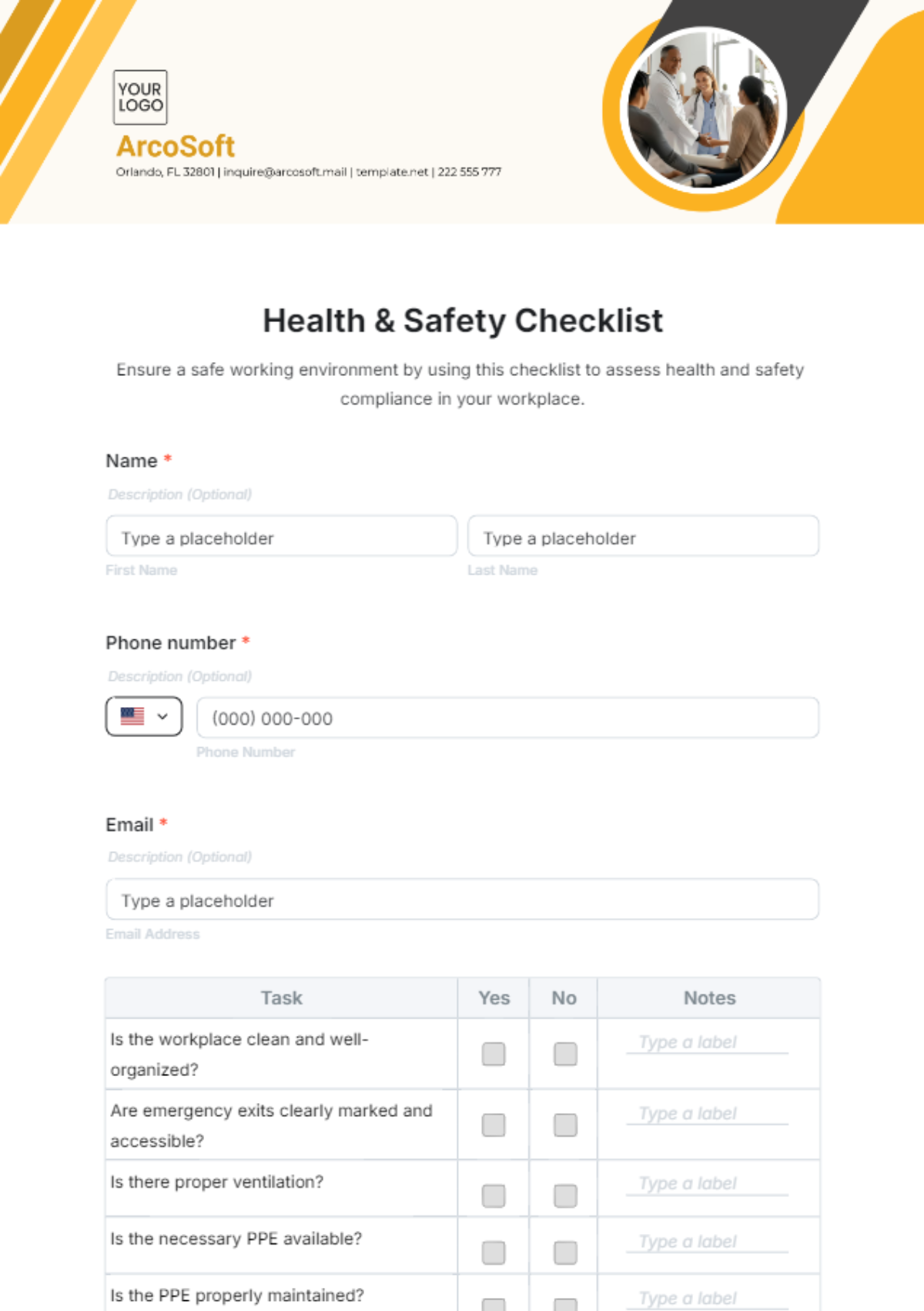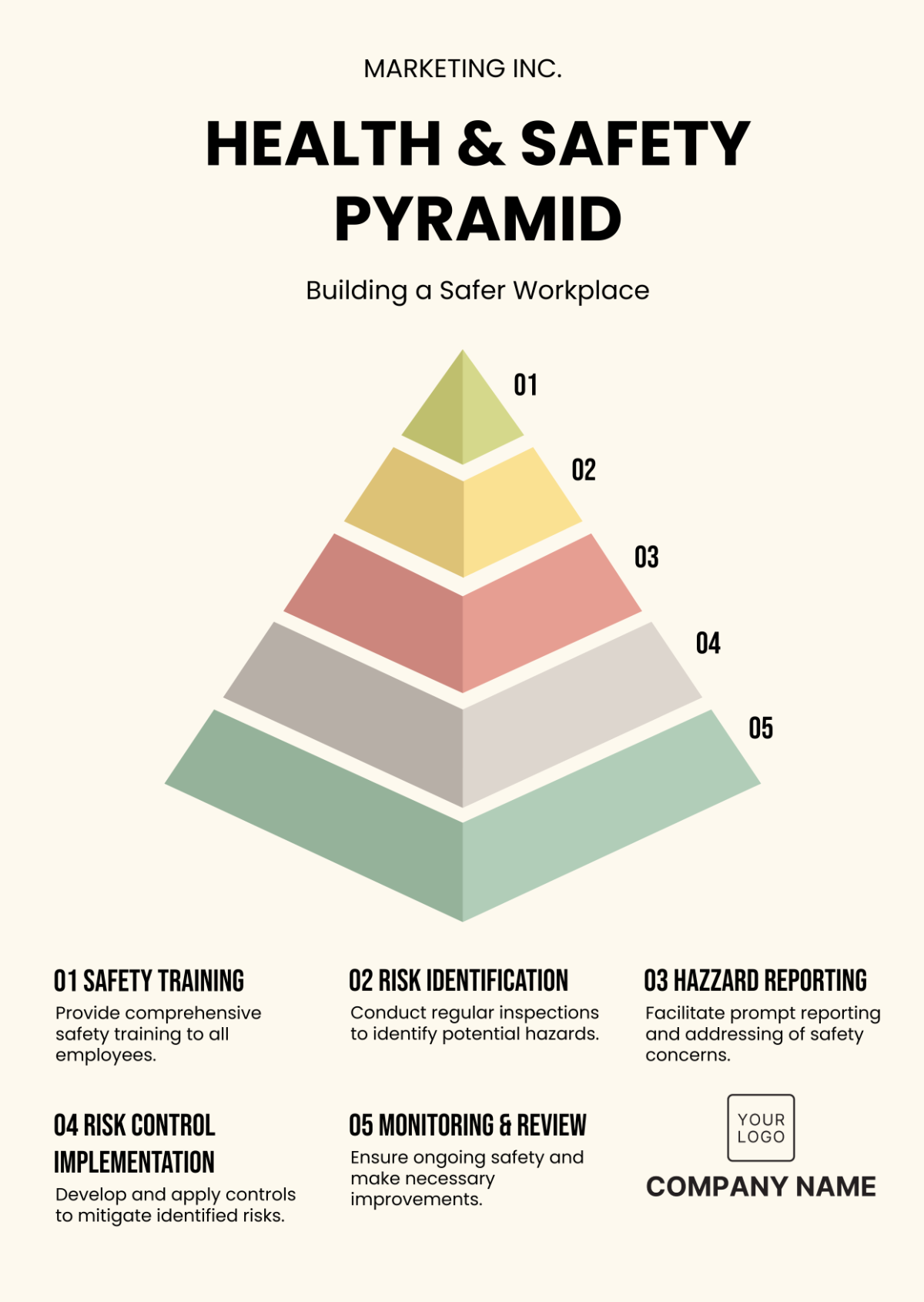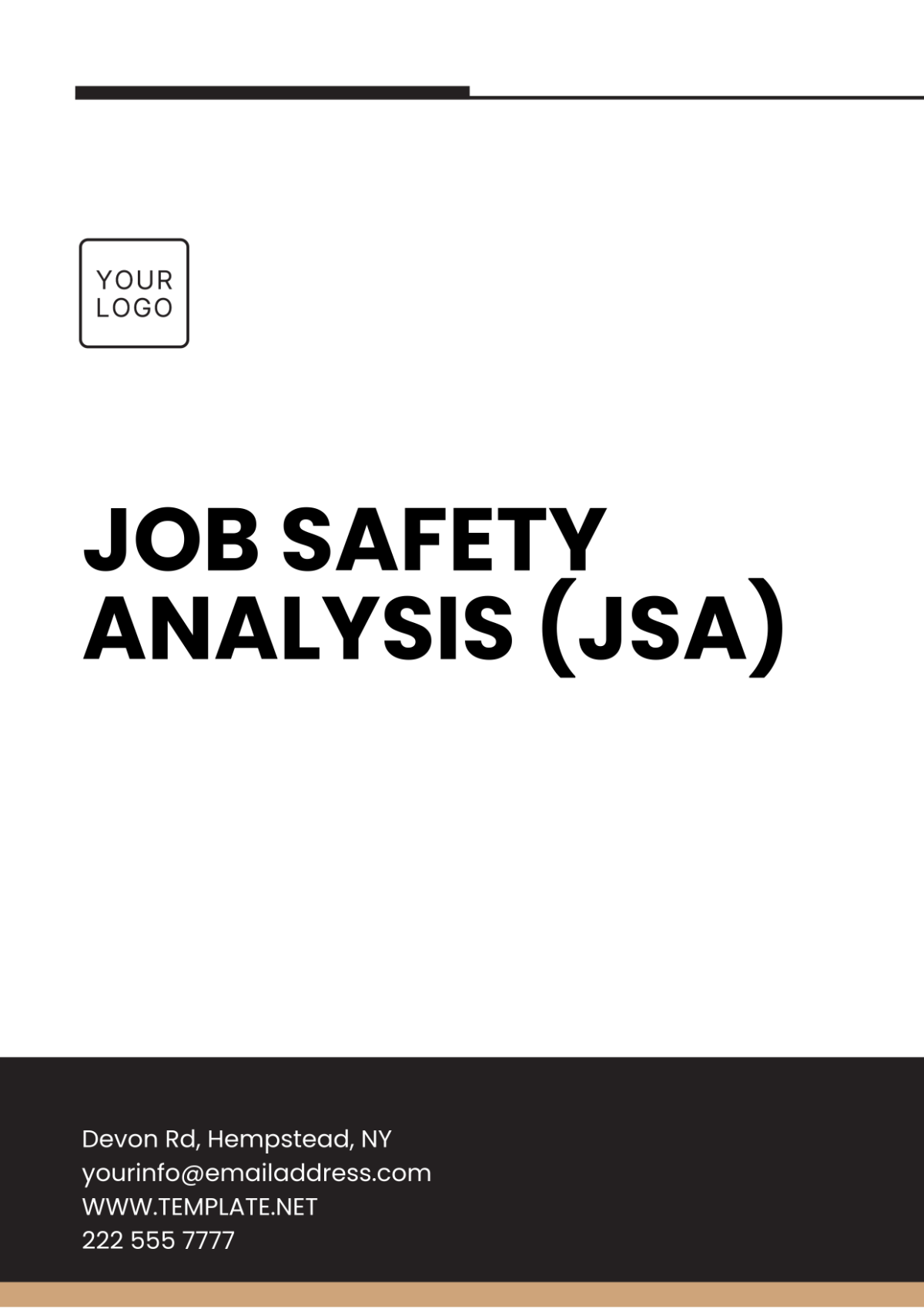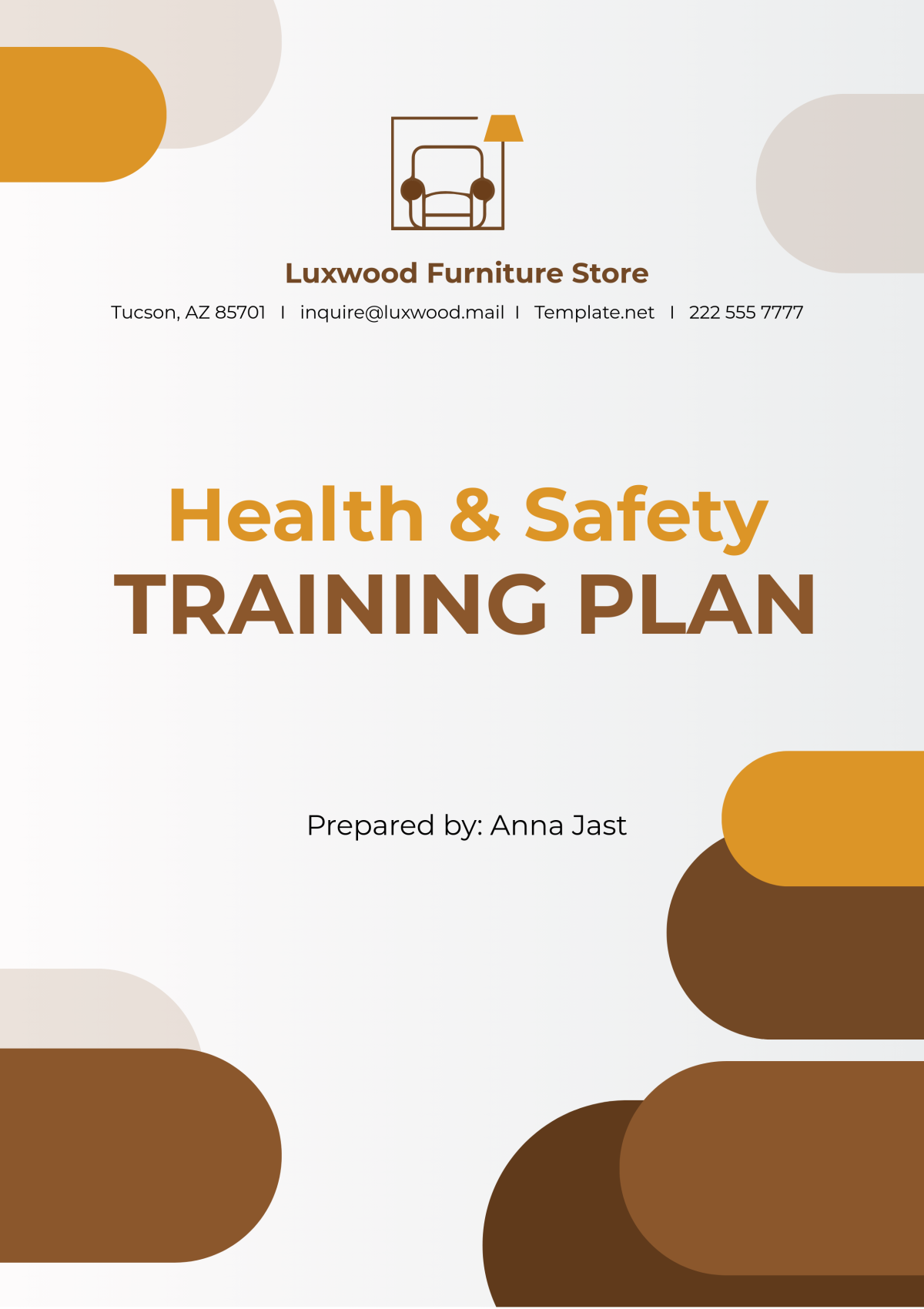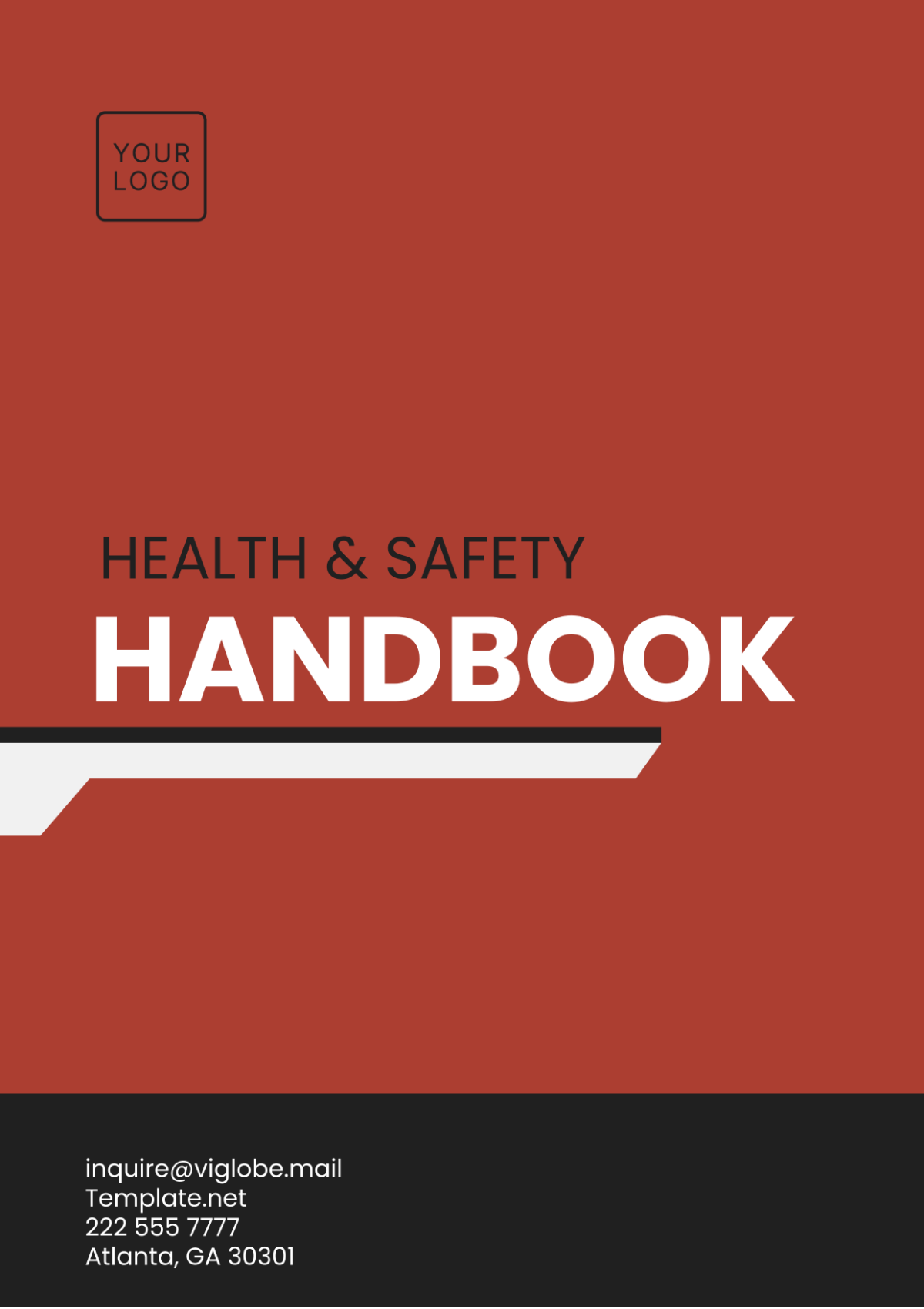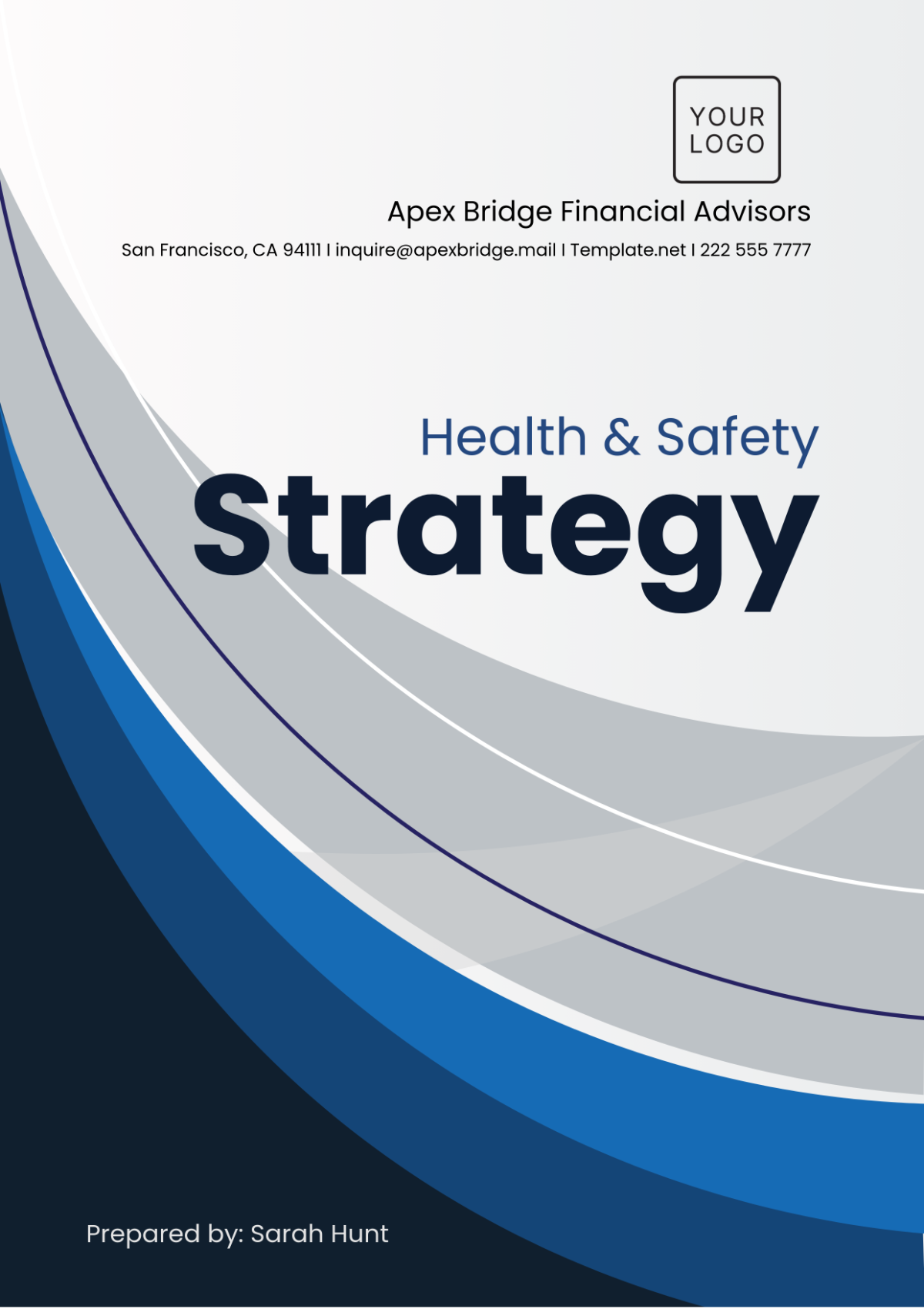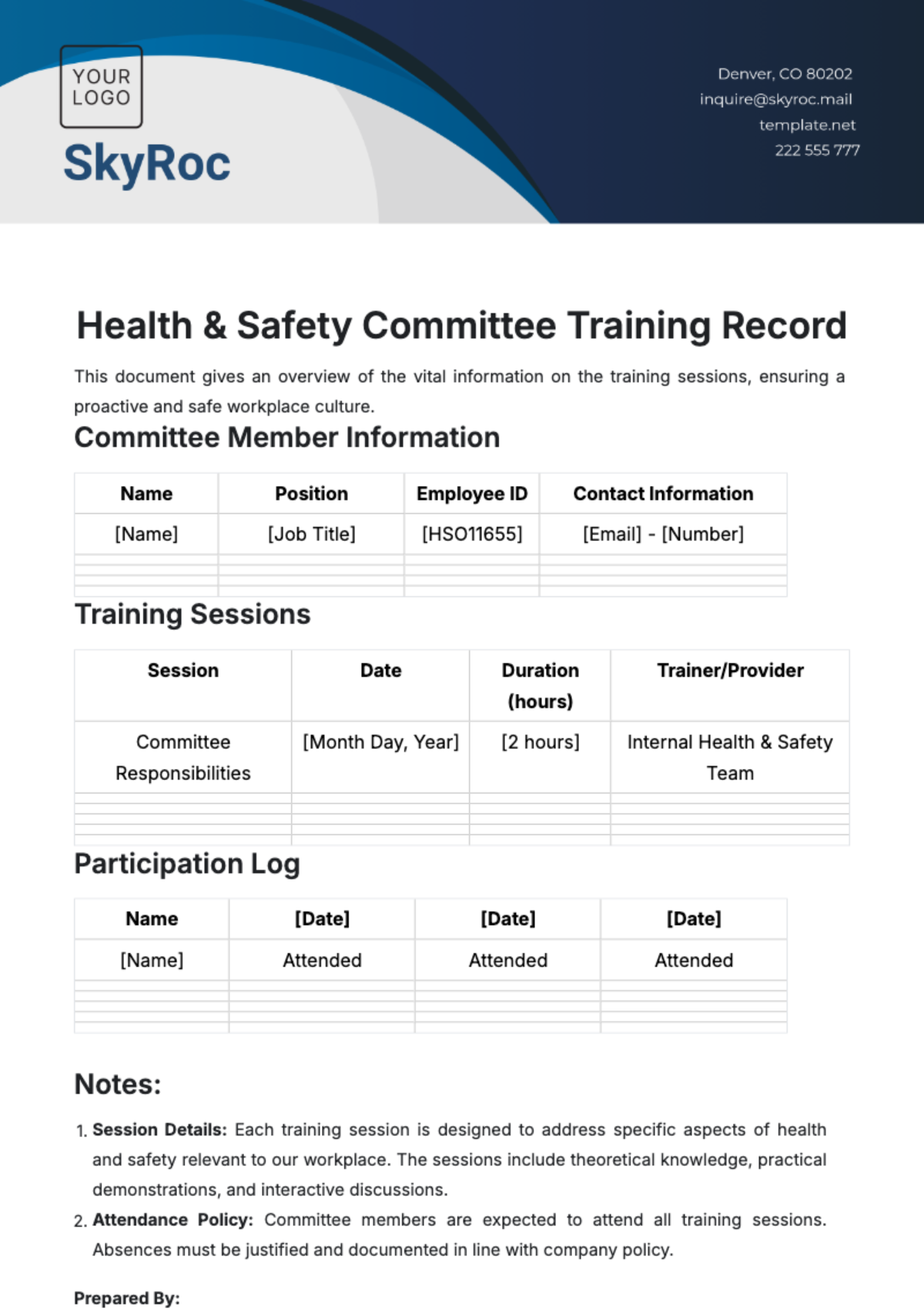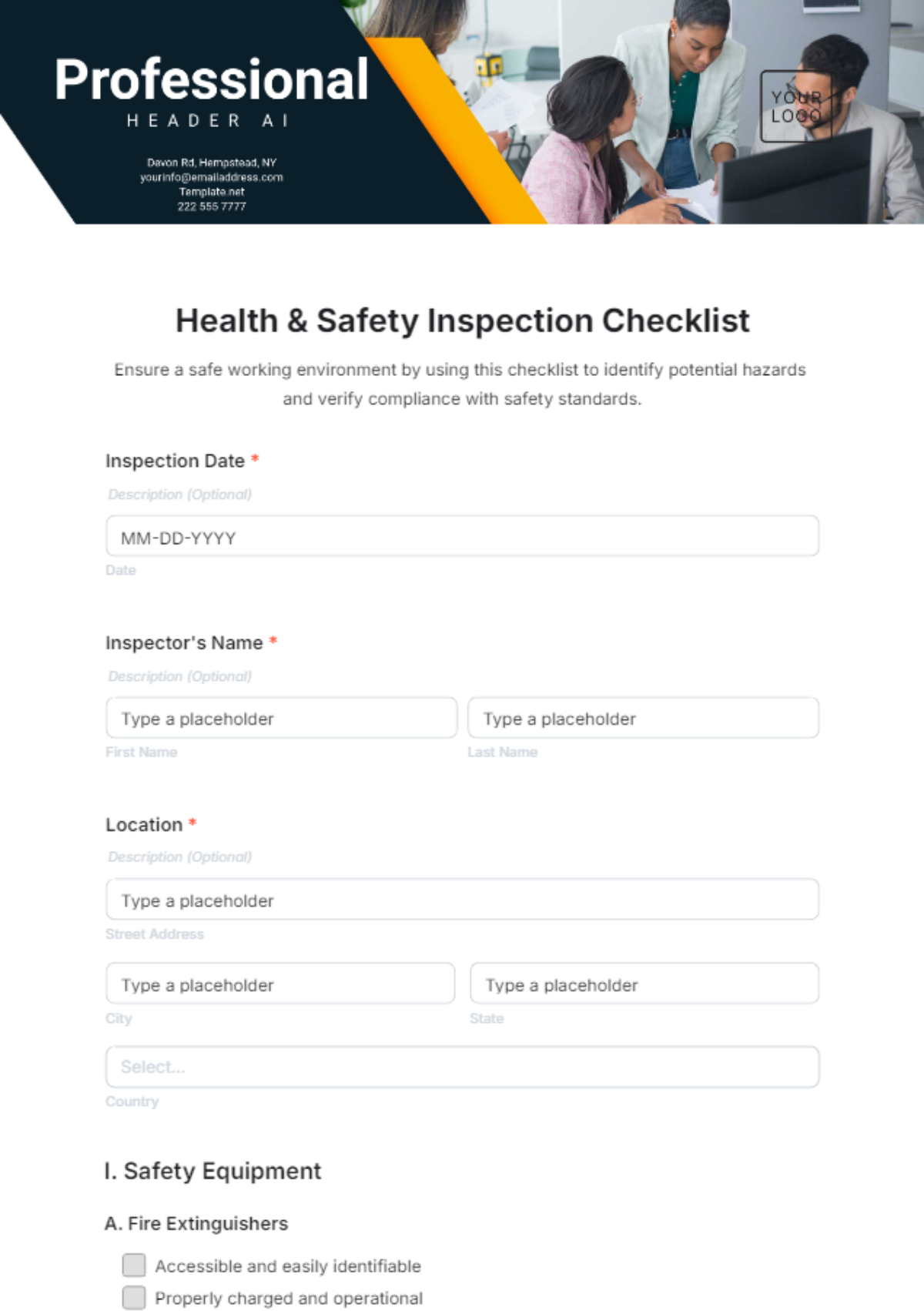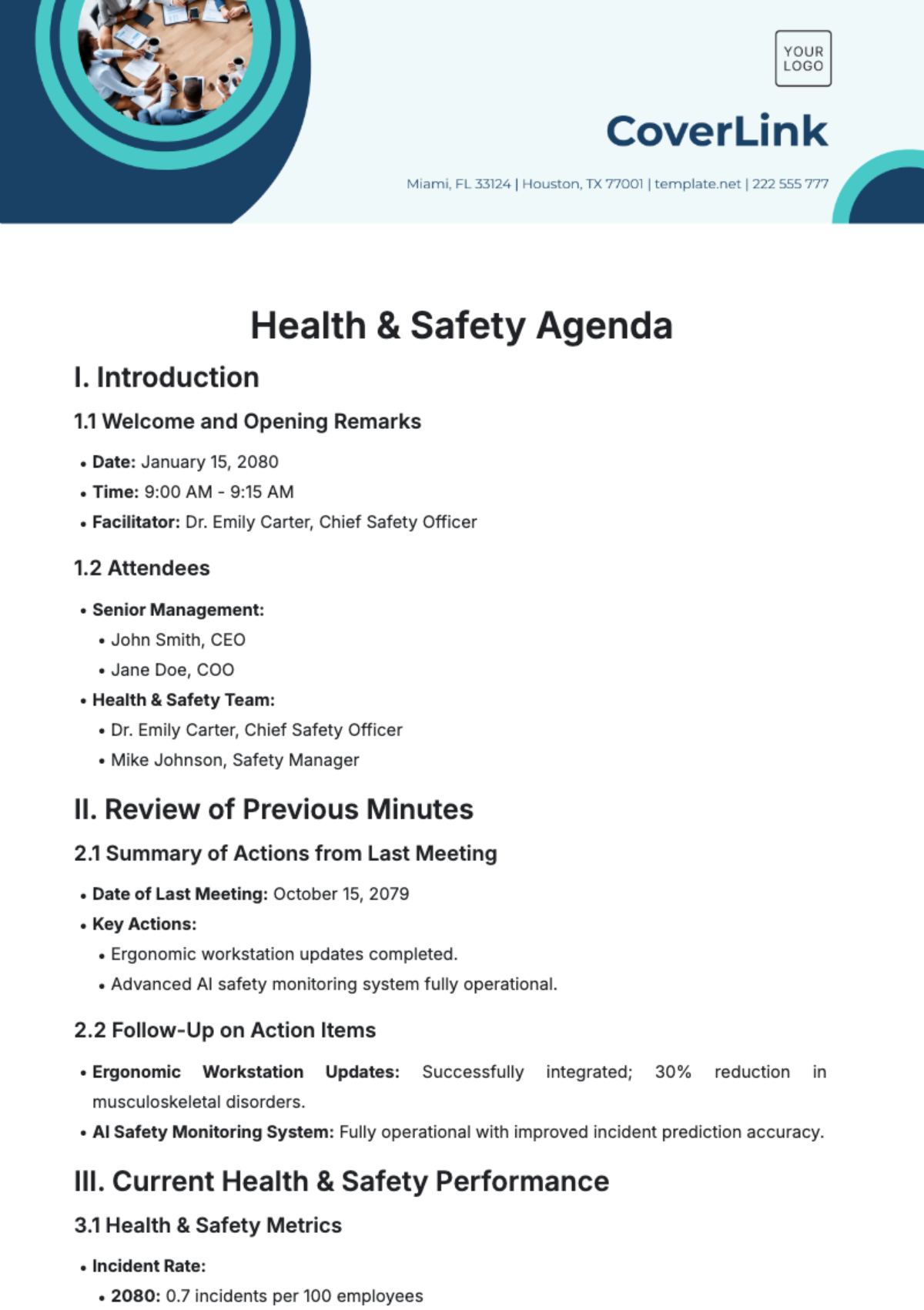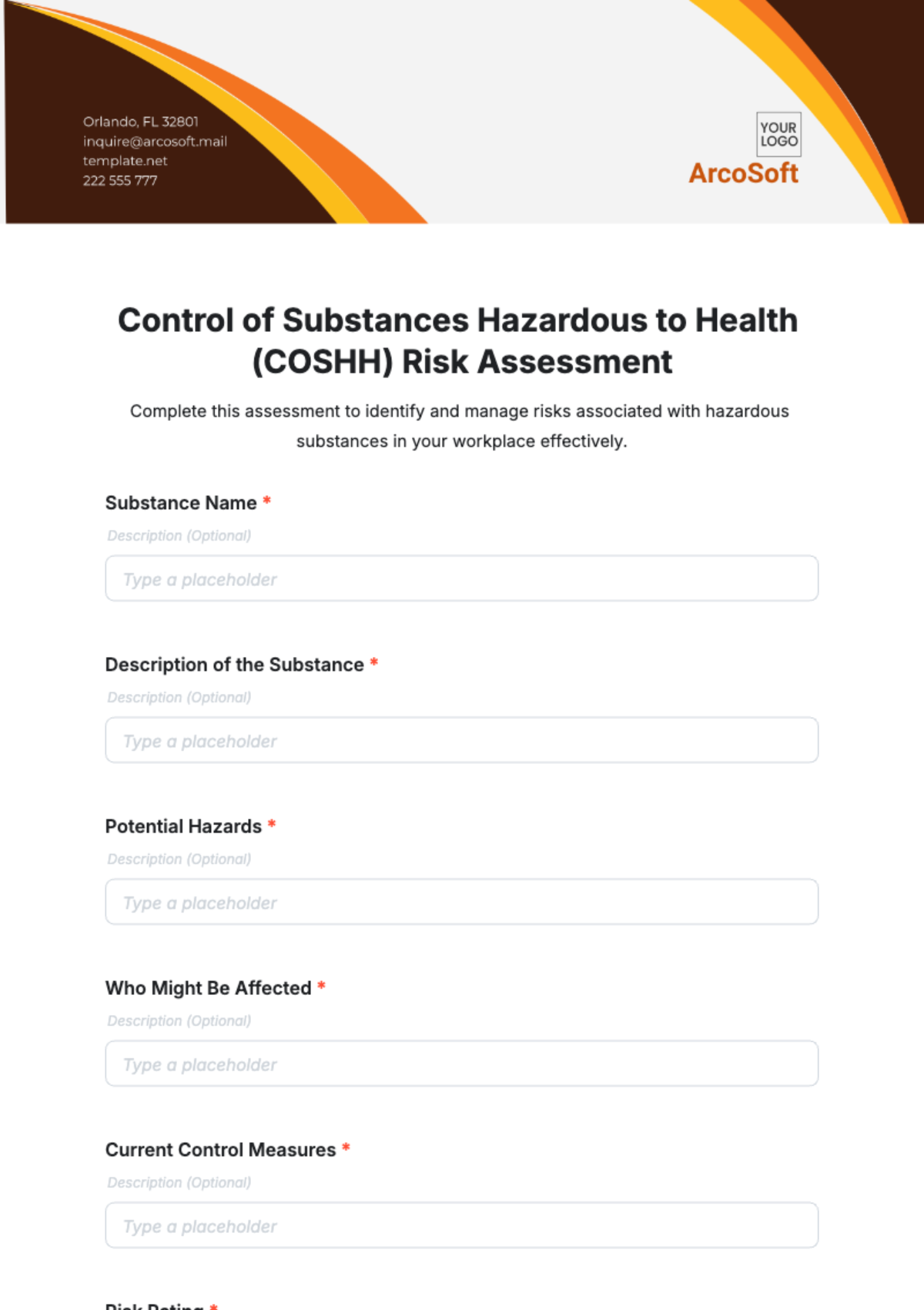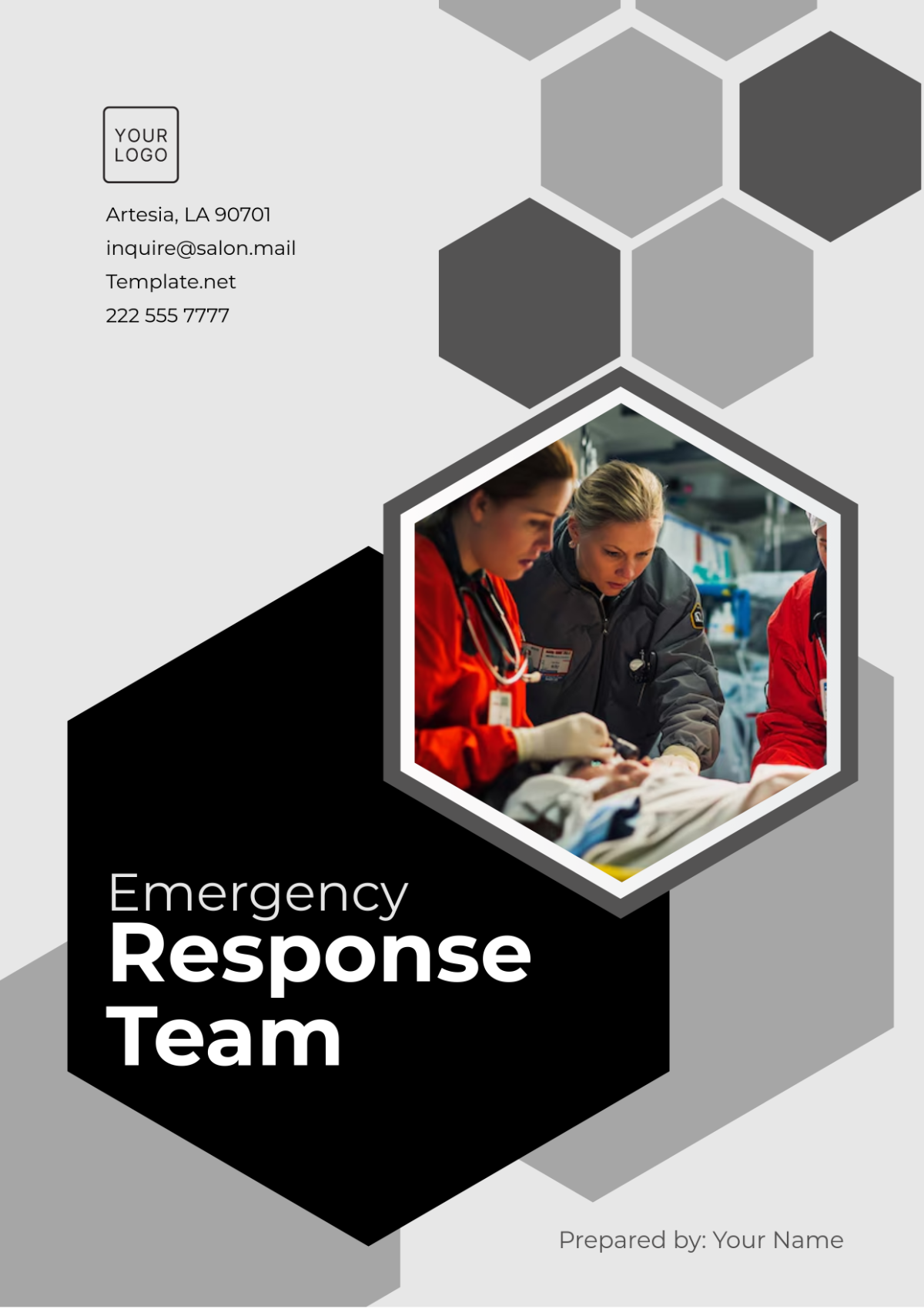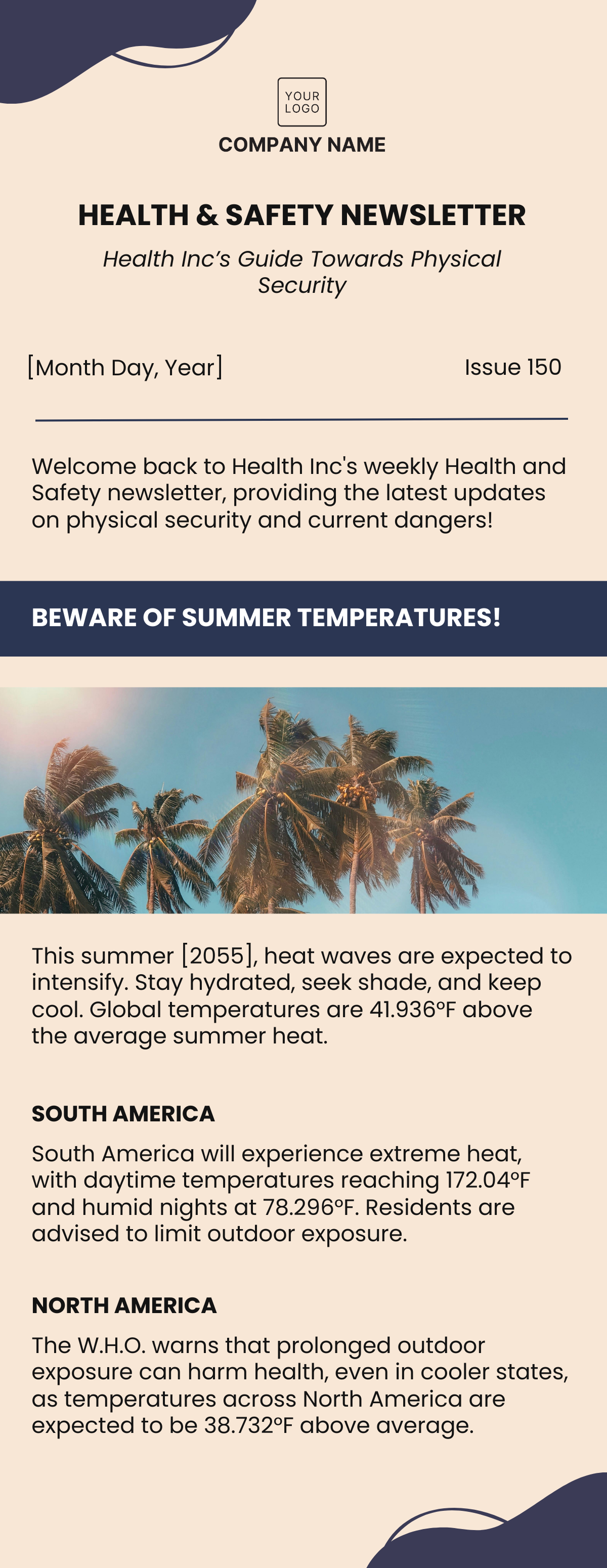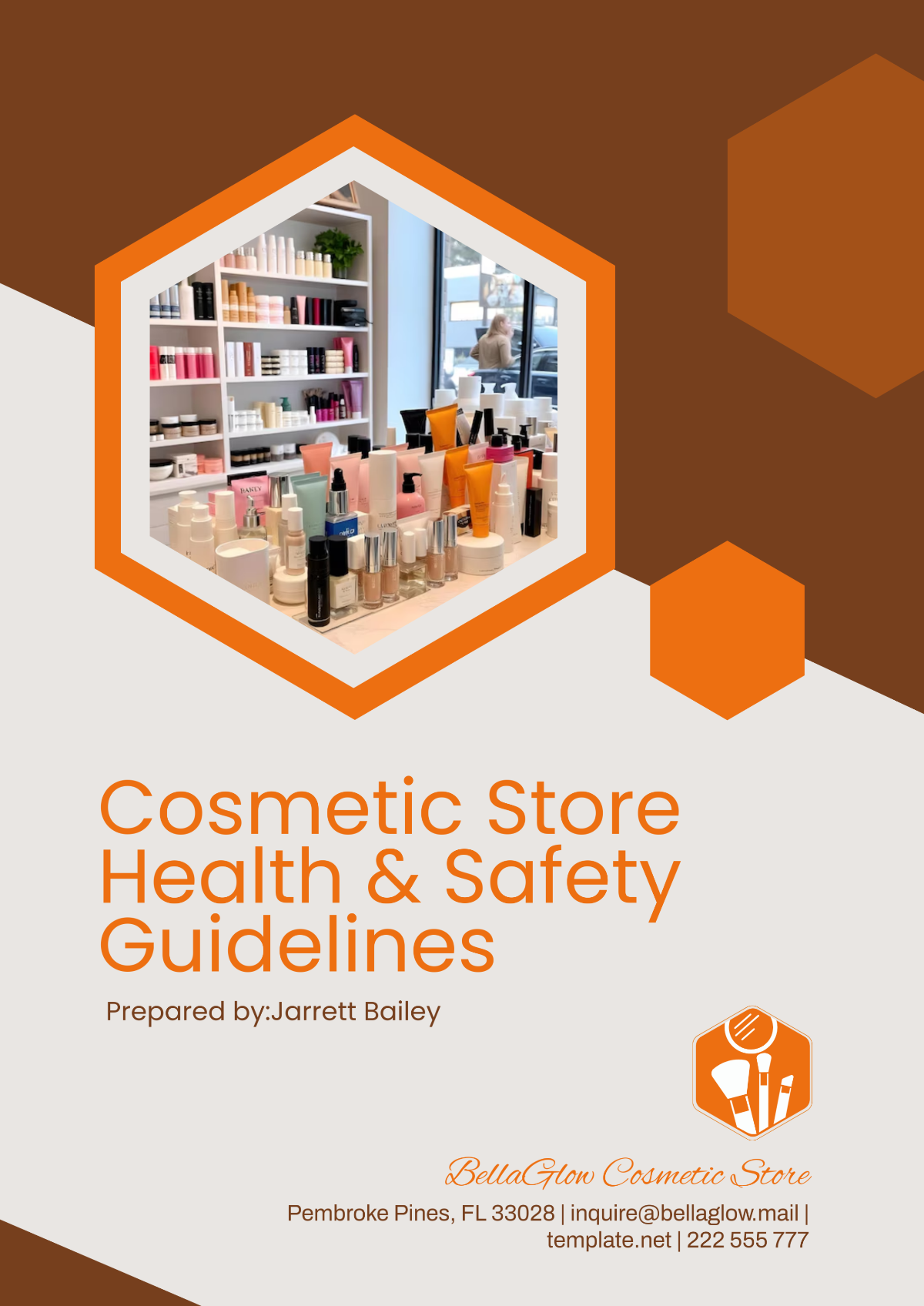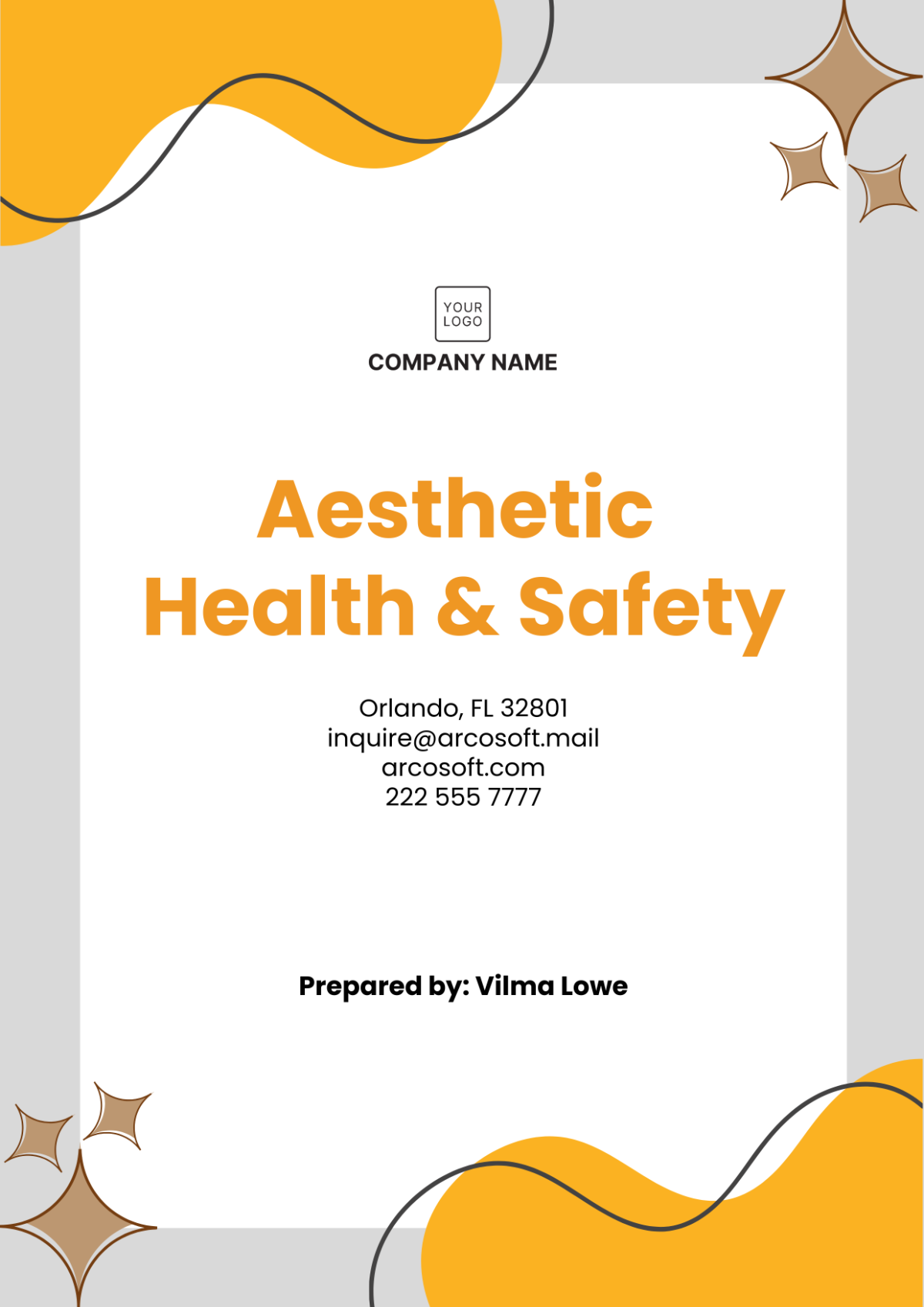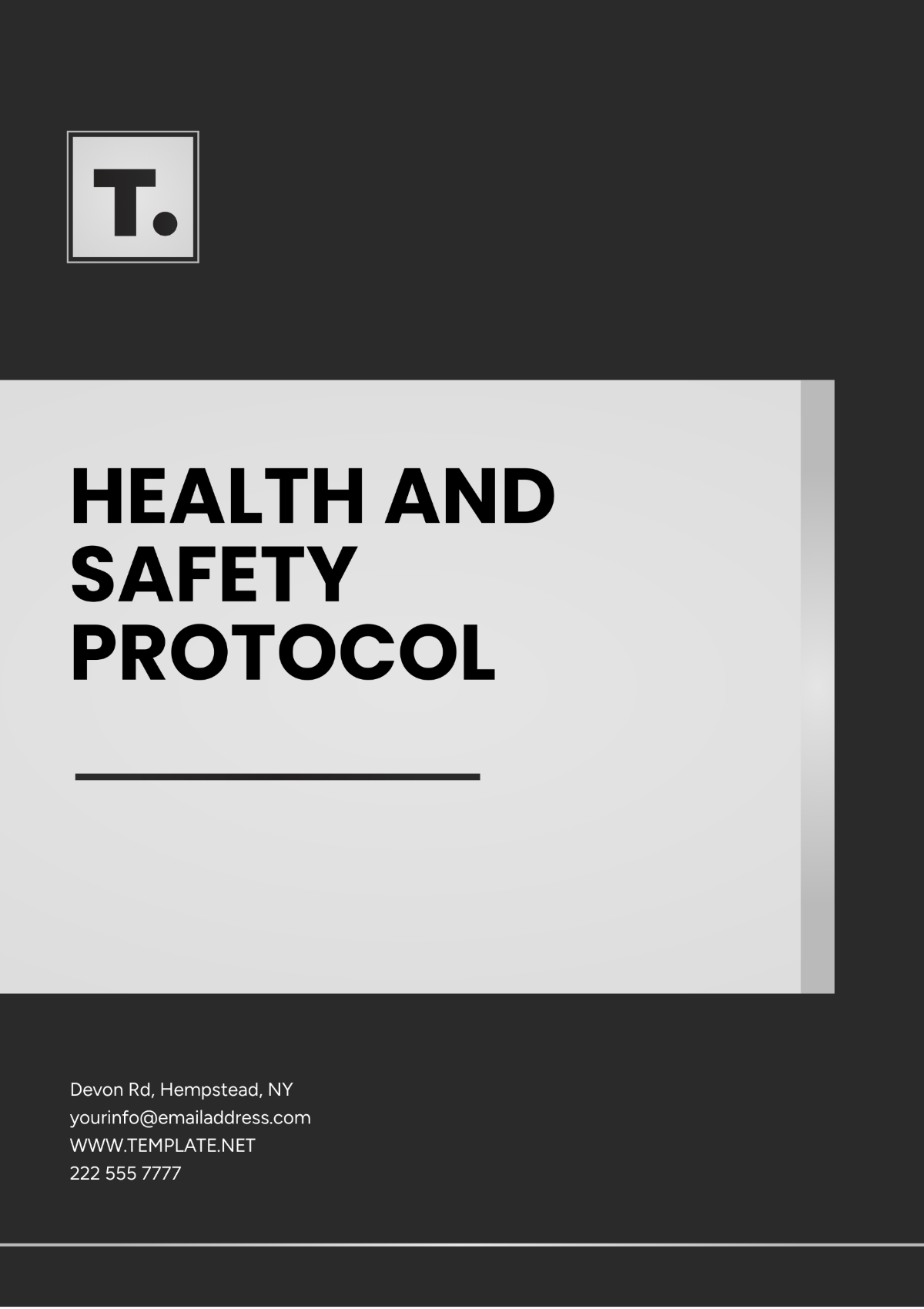Health & Safety Training Curriculum Development
Introduction
In today's dynamic workplace environment, ensuring the safety and well-being of our employees is not just a regulatory requirement, but a fundamental aspect of our corporate responsibility and culture.
This document presents a structured and detailed curriculum designed to educate and empower our employees with essential knowledge and skills in health and safety. Our goal is to create a workplace where every team member is aware of the potential hazards, knows how to prevent accidents, and can respond effectively in case of emergencies.
The curriculum encompasses various modules that cover a wide range of topics, from basic safety principles and emergency procedures to specific training on equipment handling and ergonomics. Each module is crafted to cater to the unique needs of our diverse workforce, ensuring relevance and applicability across all departments.
By investing in this comprehensive training program, we are not only complying with legal standards but also demonstrating our commitment to creating a safe, healthy, and productive work environment. We believe that knowledge and awareness are key to preventing workplace incidents, and this curriculum is a vital step in fostering a culture of safety that aligns with the values and goals of [Your Company Name].
As you go through this document, you will find detailed information about the learning objectives, content, evaluation methods, and implementation plans for each module. We encourage all employees to actively participate and engage in these training sessions, as your safety is our top priority.
Together, let's work towards building a safer workplace where every employee feels protected and valued.
1. Curriculum Overview
The following table provides an overview of the Health & Safety Training Curriculum developed for [Your Company Name]. This curriculum is structured into various modules, each designed to address different aspects of workplace safety and health. The table outlines the title of each module, a brief description of its content, the duration of the training, the target audience for whom the module is most relevant, and the method of delivery.
This structured approach ensures that all employees, regardless of their role or experience level, receive the necessary training to maintain a safe working environment. It allows for both new hires and existing staff to understand the fundamental principles of workplace safety, recognize potential hazards, and learn best practices to prevent accidents and injuries.
The diverse methods of delivery, including in-person and online options, cater to different learning styles and workplace scenarios, ensuring maximum accessibility and engagement.
Please refer to the table below for detailed information about each module in the curriculum:
Module | Description | Duration | Target Audience | Method of Delivery |
Introduction to Workplace Safety | Basics of health and safety, company-specific policies | 2 hours | All new hires | In-person/ Online |
Emergency Procedures | Detailed procedures for different emergency scenarios | 1 hour | All employees | In-person/ Online |
Hazard Identification | Identifying and reporting potential hazards | 1.5 hours | All employees | In-person/ Online |
Ergonomics | Safe workstation setup and practices | 1 hour | Office staff | In-person/ Online |
Equipment Safety | Proper use of company equipment | 2 hours | Operational staff | In-person |
Health & Wellness | Promoting general health and well-being | 1 hour | All employees | Online |
First Aid Training | Basic first aid and CPR techniques | 3 hours | Selected employees | In-person |
This curriculum overview serves as a guide for the comprehensive training program, ensuring that every aspect of health and safety is covered thoroughly for the benefit of all employees at [Your Company Name].
2. Learning Objectives
This section elaborates on the specific learning objectives of the Health & Safety Training Curriculum at [Your Company Name]. These objectives are crucial as they define the expected outcomes for the employees upon completion of the training modules. Each objective targets a key aspect of workplace safety, ensuring a holistic approach to fostering a safer work environment.
1. Understanding of Key Safety Principles
Objective Detail: This objective focuses on imparting foundational knowledge of health and safety principles. Employees will learn about the importance of safety in the workplace, understand the legal and ethical obligations related to health and safety, and recognize the role of each individual in maintaining a safe working environment.
Expected Outcome: Employees will be able to articulate the core principles of workplace safety, comprehend their significance, and apply them in daily work practices.
2. Emergency Preparedness
Objective Detail: This objective aims to equip employees with the knowledge and skills to respond effectively to various emergencies, such as fires, medical emergencies, or natural disasters. It includes understanding evacuation plans, emergency contact protocols, and the use of emergency equipment.
Expected Outcome: Employees will be confident in their ability to act quickly and correctly in emergencies, thereby minimizing potential harm to themselves and others.
3. Hazard Awareness
Objective Detail: This objective is designed to enhance the ability of employees to identify potential hazards in the workplace. This includes recognizing physical, chemical, biological, and ergonomic hazards. Employees will also learn the proper procedures for reporting these hazards to the appropriate personnel.
Expected Outcome: Employees will develop a keen sense of awareness regarding their surroundings, enabling them to spot and report hazards proactively, thus preventing accidents and injuries.
4. Equipment Handling
Objective Detail: This objective focuses on the safe and efficient use of workplace equipment. It covers the correct operation of machinery, tools, and other equipment, adherence to safety guidelines, and understanding the importance of regular maintenance and safety checks.
Expected Outcome: Employees, especially those in operational roles, will be competent in handling equipment, reducing the risk of accidents due to misuse or malfunction.
5. First Aid Proficiency
Objective Detail: This objective targets selected employees who will receive training in basic first aid and CPR techniques. The training will cover how to assess a situation, provide immediate care in emergencies, and understand when to escalate to professional medical help.
Expected Outcome: Trained employees will be capable of providing initial and potentially life-saving care in medical emergencies, bridging the gap until professional help arrives.
By achieving these learning objectives, [Your Company Name] ensures that its employees are not only compliant with health and safety regulations but are also proactive in creating and maintaining a safe and healthy work environment. This comprehensive understanding and skill set will contribute significantly to reducing workplace incidents and promoting a culture of safety.
3. Content Details
This section provides detailed content outlines for each module included in the Health & Safety Training Curriculum at [Your Company Name]. The modules are designed to comprehensively cover various aspects of workplace safety and health, ensuring that employees are well-equipped with the necessary knowledge and skills. Below is a table that summarizes the objectives and key content points of each module.
Module | Objective | Key Content |
Module 1: Introduction to Workplace Safety | Familiarize yourself with [Your Company Name]'s safety culture and policies. | - Importance of safety in the workplace - Overview of [Your Company Name]'s safety policies - Employee's role in maintaining a safe work environment. |
Module 2: Emergency Procedures | Equip employees with the knowledge to respond to emergencies. | - Evacuation plans - Fire safety and response - Emergency contact information. |
Module 3: Hazard Identification | Develop skills to identify and report hazards. | - Types of workplace hazards - Process for reporting hazards - Preventive measures. |
Module 4: Ergonomics | Educate about ergonomics and workstation safety. | - Correct posture and equipment setup - Breaks and exercises - Eye safety. |
Module 5: Equipment Safety | Safe operation of workplace equipment. | - Equipment handling instructions - Maintenance and safety checks - Reporting equipment faults. |
Module 6: Health & Wellness | Promote overall health and well-being. | - Stress management techniques - Healthy lifestyle choices - Mental health resources. |
Module 7: First Aid Training | Provide basic first aid skills. | - CPR procedures - Wound care - Emergency response techniques. |
Each module has been tailored to align with the specific needs and roles of employees at [Your Company Name]. The curriculum aims not only to enhance safety knowledge but also to foster a proactive approach to health and well-being in the workplace.
4. Evaluation and Feedback
The Evaluation and Feedback section is a crucial part of the Health & Safety Training Curriculum at [Your Company Name]. It outlines the methods and frequency of evaluations and the process for collecting feedback from employees. This is integral to ensuring the effectiveness of the training and making necessary adjustments for continuous improvement. Below is a detailed explanation of the evaluation and feedback process.
Aspect | Method | Details |
Quizzes | Post-Module Assessment | - Conducted after each module - Includes multiple-choice, true/false, and short-answer questions - Aids in identifying areas needing further support. |
Practical Demonstrations | Hands-On Skill Application | - Applicable for modules like Equipment Safety and First Aid Training - Participants demonstrate skills in a controlled environment - Provides an opportunity for immediate trainer feedback. |
Feedback Surveys | Participant Reflections | - Distributed at the end of each module - Includes questions on content, delivery, and applicability - Open-ended questions for detailed feedback and improvement suggestions. |
Frequency | End of Each Module | - Quizzes, demonstrations, and surveys are conducted immediately after each module. |
Frequency | Annual Review | - Comprehensive review assessing long-term training impact - Includes surveys and possibly refresher quizzes - Opportunity to update curriculum based on feedback and trends. |
Purpose | Evaluation and Improvement | - Assess understanding and application of training content - Identify areas for curriculum enhancement - Incorporate participant feedback for continual improvement - Goal: Contribute to a safer, more aware workplace at [Your Company Name]. |
5. Implementation Plan
The Implementation Plan is a critical component of successfully executing the Health & Safety Training Curriculum at [Your Company Name]. This plan outlines the key action items necessary to bring the curriculum to fruition, identifying the parties responsible for each task, setting clear deadlines, and tracking the current status of these activities.
This structured approach ensures that all aspects of the training program are effectively managed and executed within the desired timelines. It facilitates coordination among different departments and individuals, enabling a smooth and efficient rollout of the training sessions.
Below is a table that summarizes the action items, responsible parties, deadlines, and the current status of each element in the implementation plan. This table serves as a roadmap for the successful deployment of the Health & Safety Training Curriculum at [Your Company Name].
Action Item | Responsible Party | Deadline | Status |
Finalize curriculum | [Your Name] | [Month Day Year] | [Pending] |
Arrange training resources | HR Department | [Month Day Year] | [In Progress] |
Schedule training sessions | Training Coordinator | [Month Day Year] | [Planned] |
Monitor and evaluate training | Safety Officer | [Ongoing] | [Ongoing] |
This plan will be regularly updated to reflect the progress of each action item and to ensure that the training program is aligned with the evolving needs of the organization.
6. Contact Information
Should you have any inquiries, require further information, or wish to provide suggestions regarding the Health & Safety Training Curriculum, please do not hesitate to reach out to the appropriate contacts listed below. Our dedicated team at [Your Company Name] is committed to providing support and addressing any concerns you may have to ensure the effective implementation and ongoing success of this training program.
Below is the contact information for [Your Company Name], including email, website, physical address, phone number, and social media channels. Additionally, for direct communication regarding the curriculum, you can contact [Your Name] using the provided email and phone number.
Detail | Information |
Company Name: | [Your Company Name] |
Email: | [Your Company Email] |
Website: | [Your Company Website] |
Address: | [Your Company Address] |
Phone: | [Your Company Phone Number] |
Social Media: | [Your Social Media] |
Direct Contact: | [Your Name] |
Personal Email: | [Your Email] |
User Phone: | [Your User Phone] |
We encourage open communication and value your feedback as it is crucial for the continuous improvement of our training initiatives
7. Budget
The budget is a fundamental aspect of the Health & Safety Training Curriculum implementation at [Your Company Name]. It outlines the estimated financial resources required to effectively execute the training program. The comprehensive budget includes expenses for materials, hiring external trainers, and subscriptions to online platforms, ensuring that the training is both high-quality and comprehensive.
In the table below, we provide a detailed breakdown of the estimated budget. This breakdown will help in understanding the allocation of funds to different areas of the training program, ensuring transparency and efficient use of resources.
Budget Item | Description | Estimated Cost |
Training Materials | Manuals, handouts, and other printed materials for participants. | [$00.000] |
External Trainers | Fees for professional trainers specializing in health and safety. | [$00.000] |
Online Platform Subscriptions | Subscription costs for e-learning platforms and virtual training tools. | [$00.000] |
Equipment for Training | Equipment required for practical demonstrations and training sessions. | [$00.000] |
Venue Costs | If applicable, rental costs for external venues for in-person training. | [$00.000] |
Miscellaneous Expenses | Additional unforeseen expenses including contingencies. | [$00.000] |
Total Estimated Budget: [$000.00]
This budget is designed to ensure that the Health & Safety Training Curriculum is comprehensive, engaging, and effective in meeting its objectives. It is subject to review and adjustment as necessary based on actual expenses or changes in the training requirements. [Your Company Name] is committed to investing in the safety and well-being of its employees, and this budget reflects that commitment.
